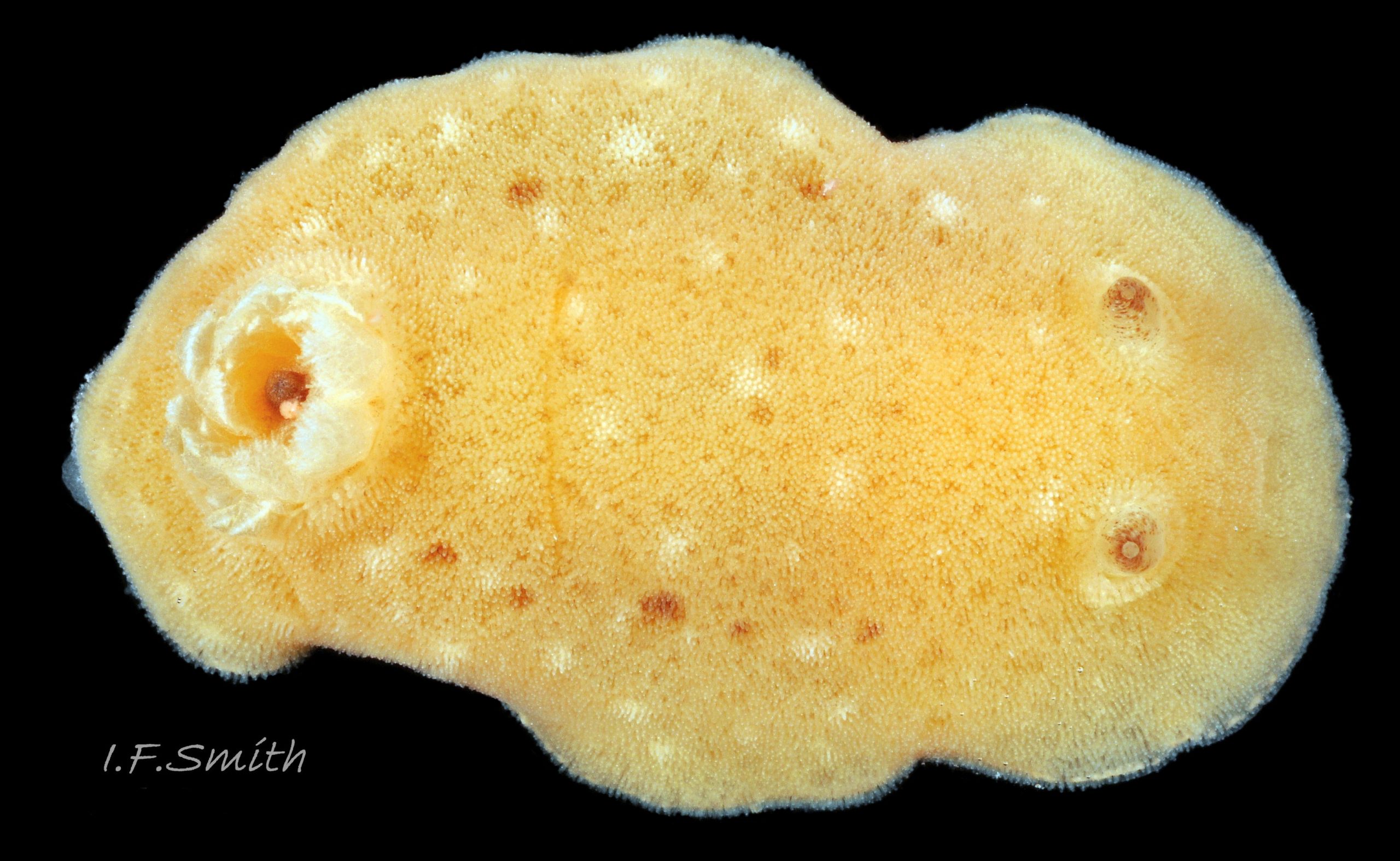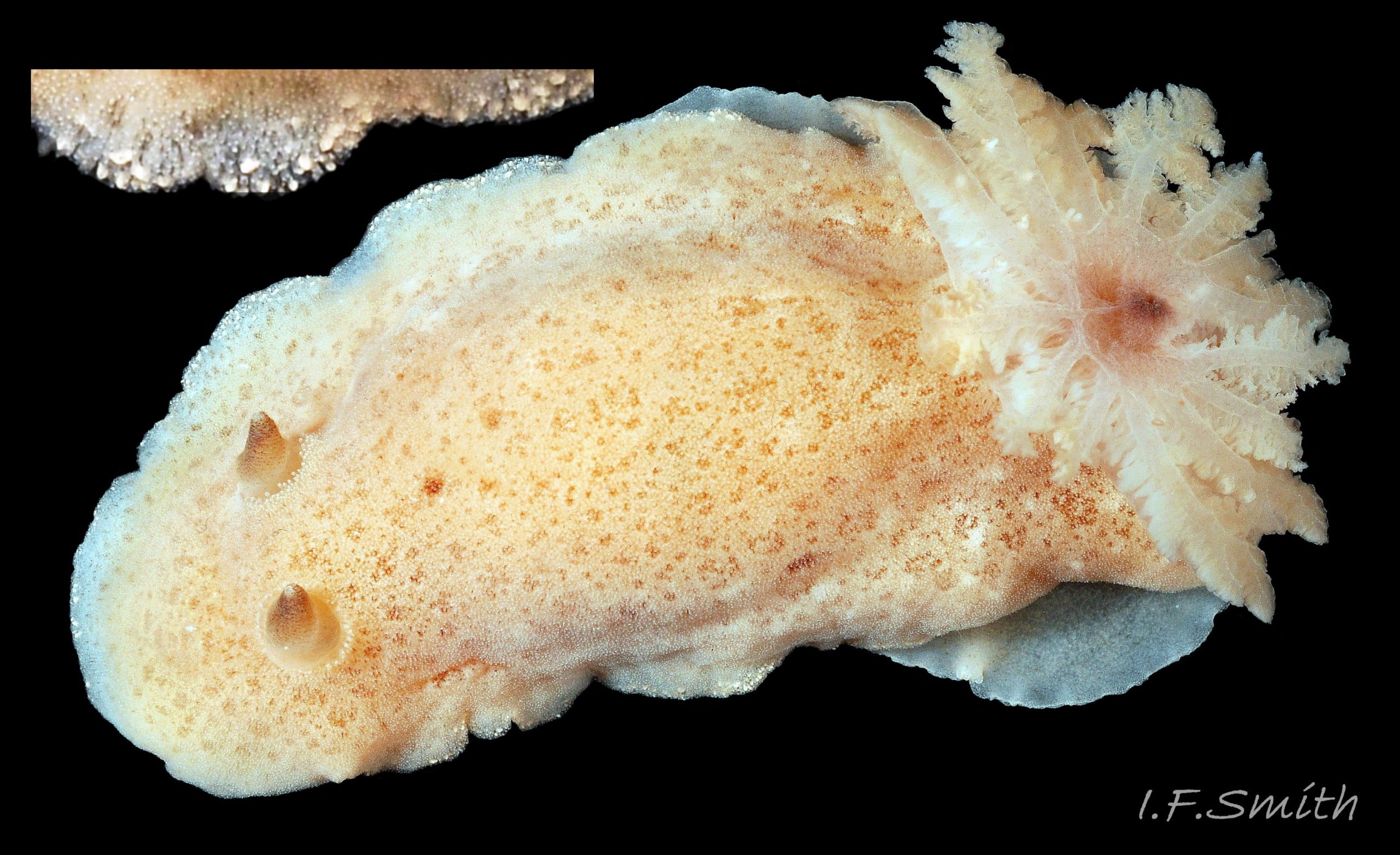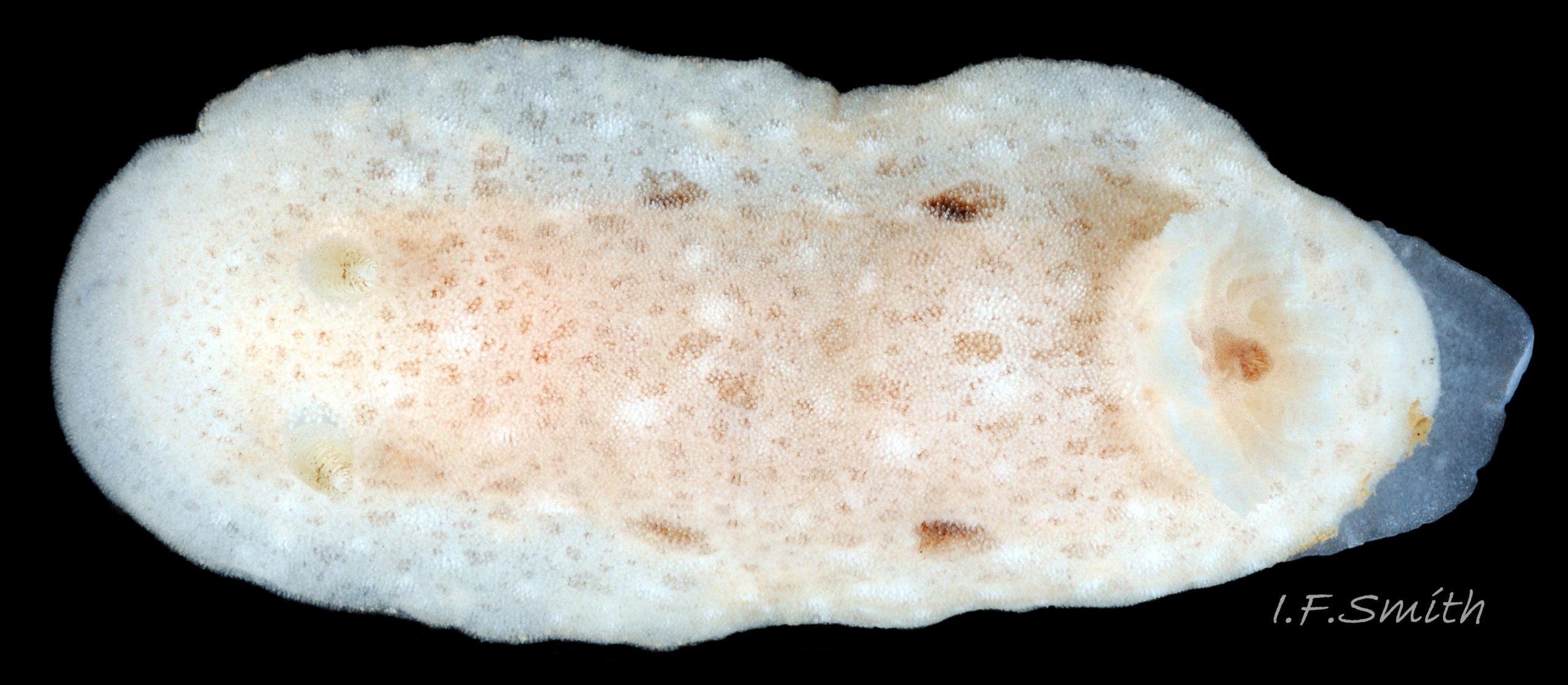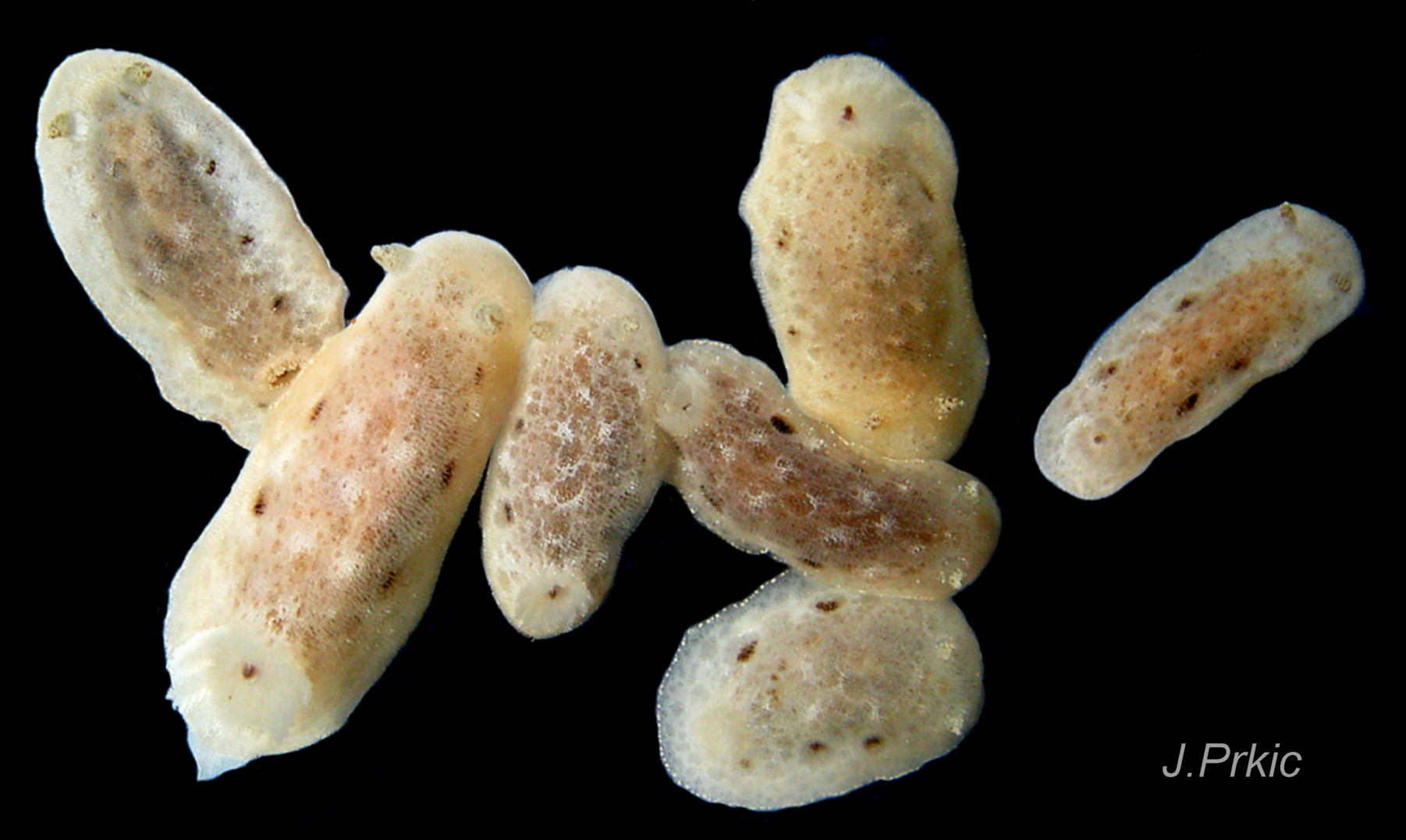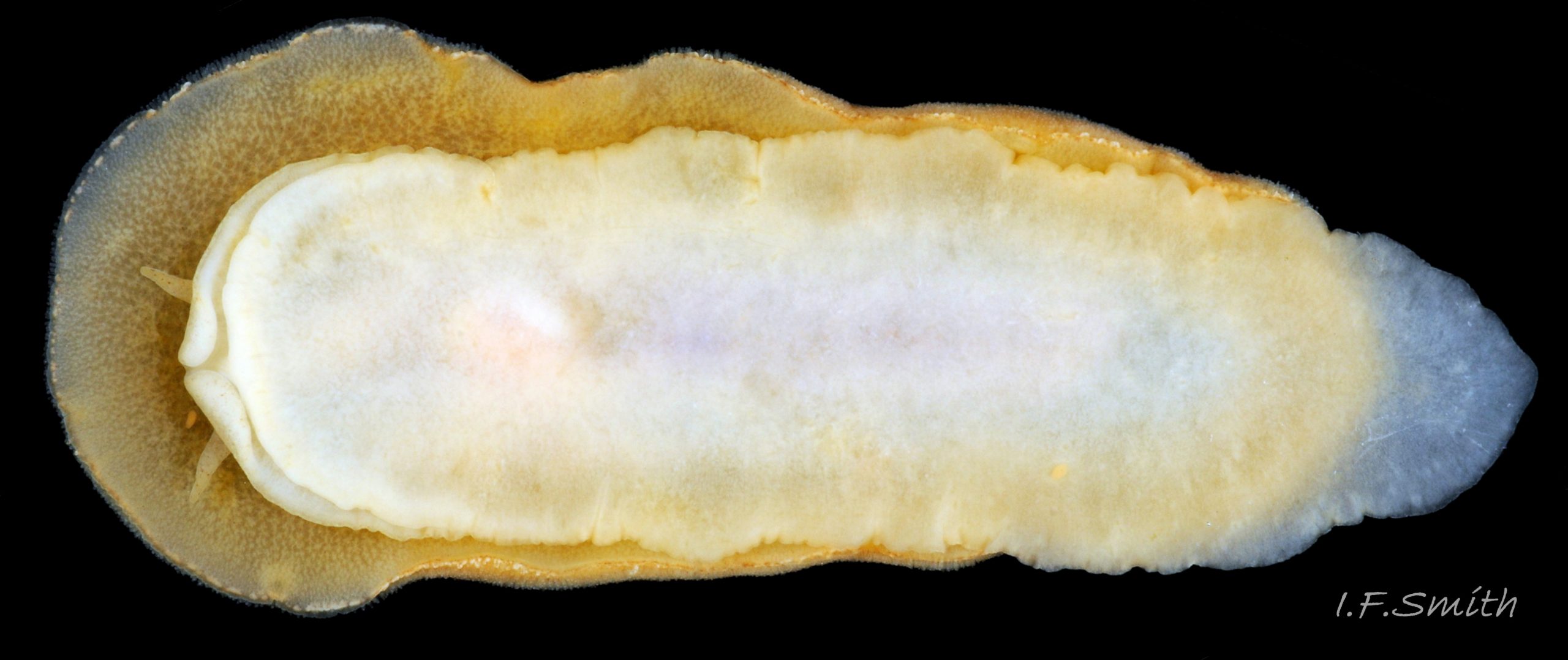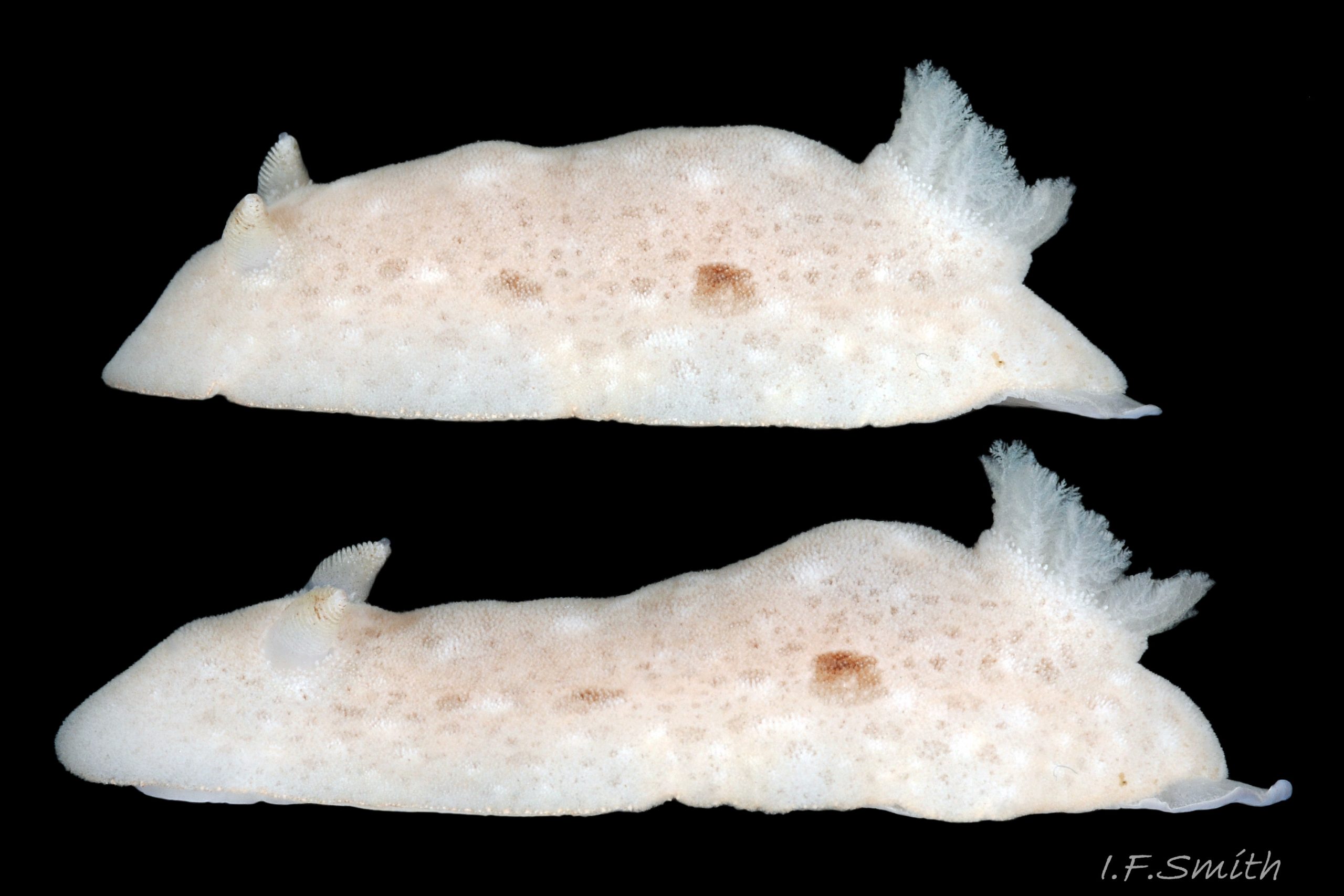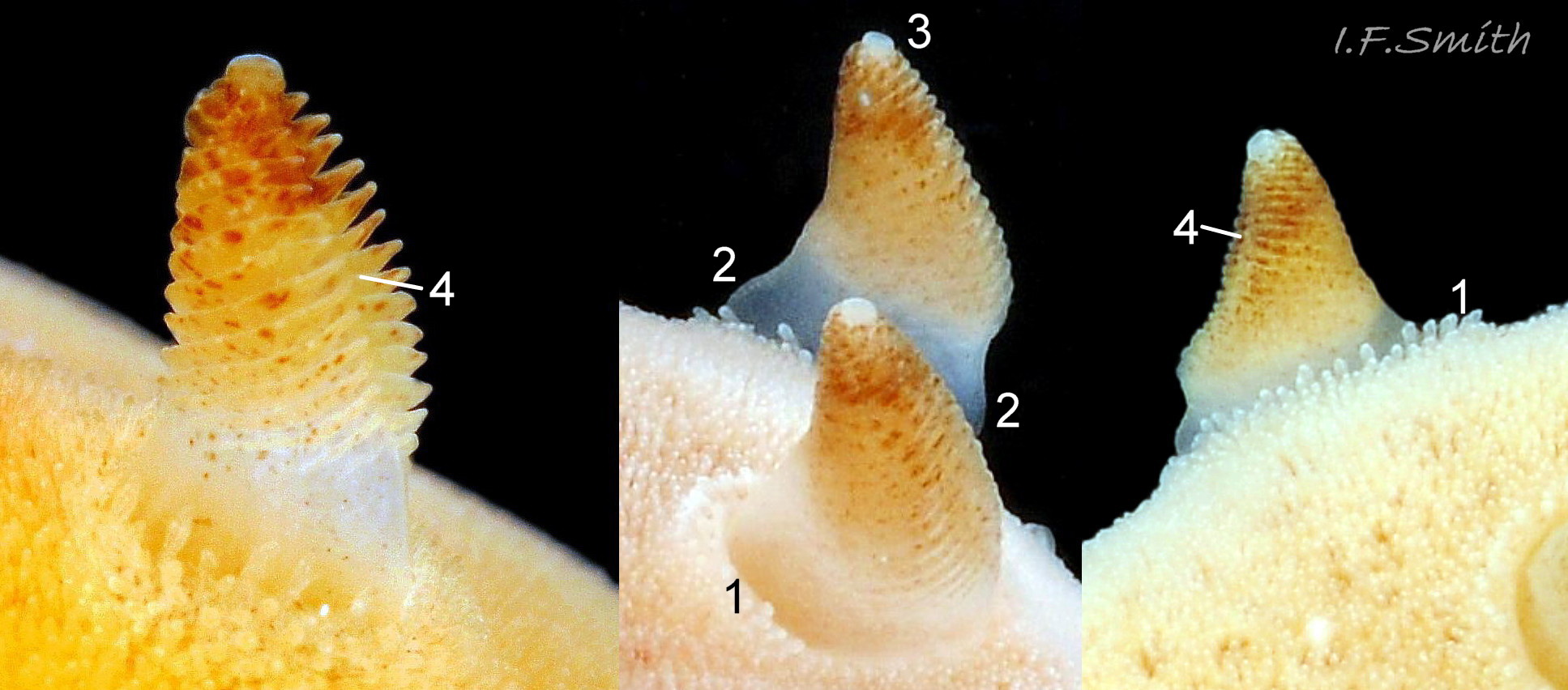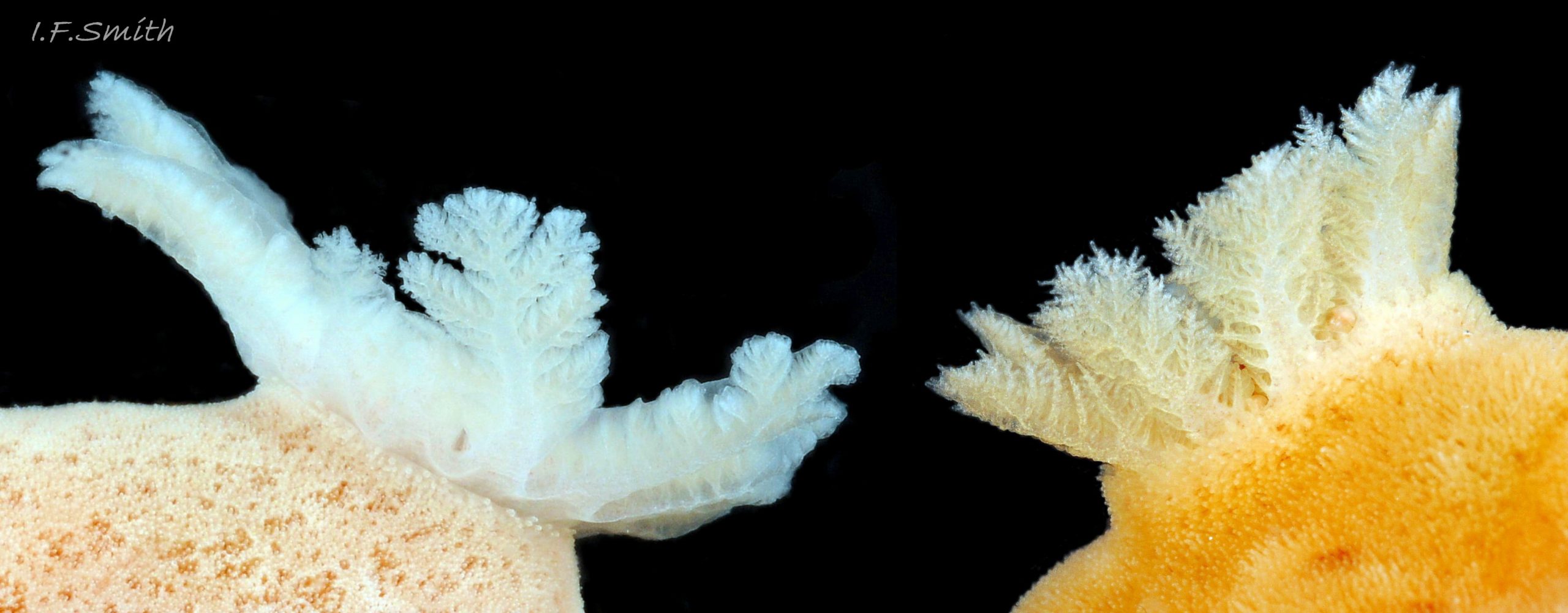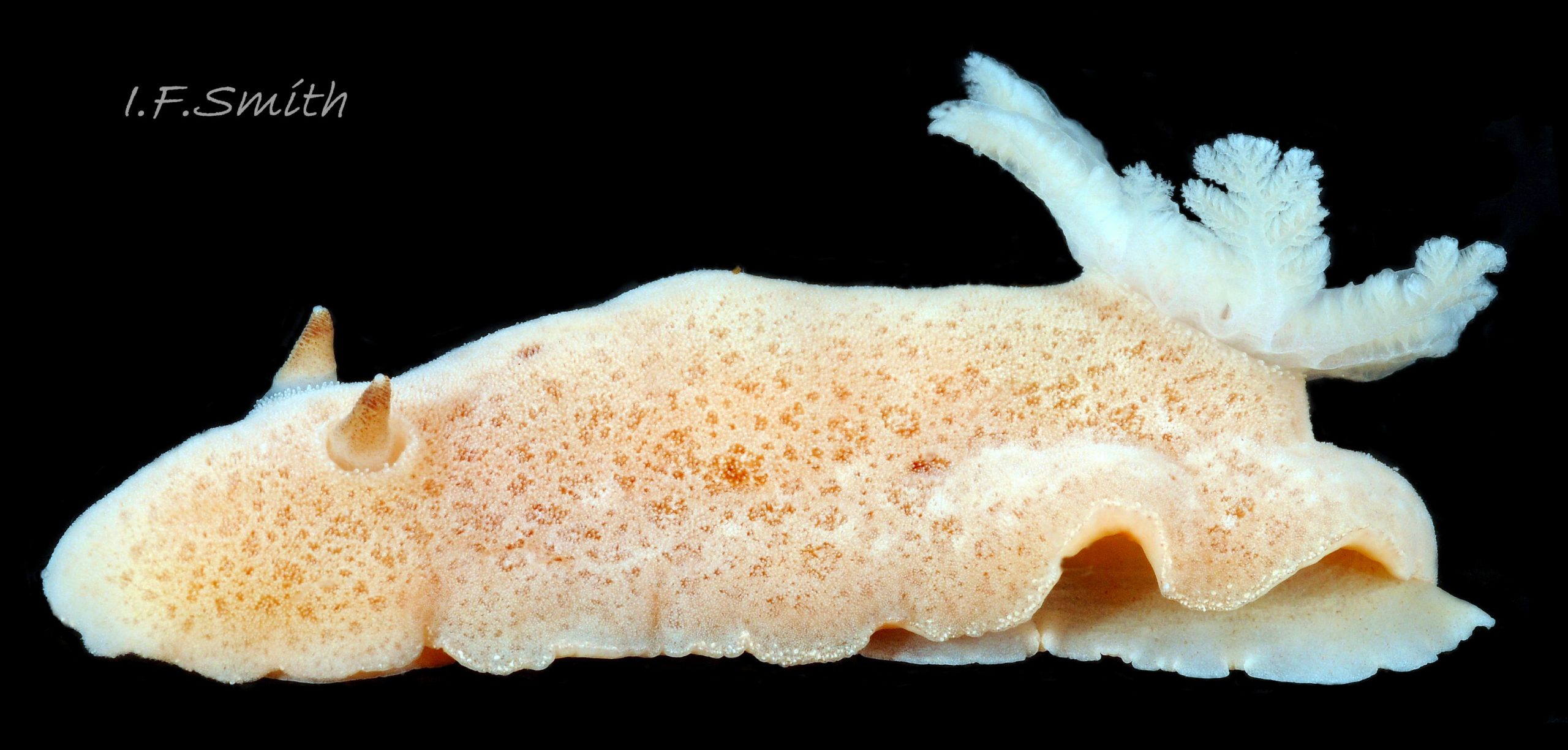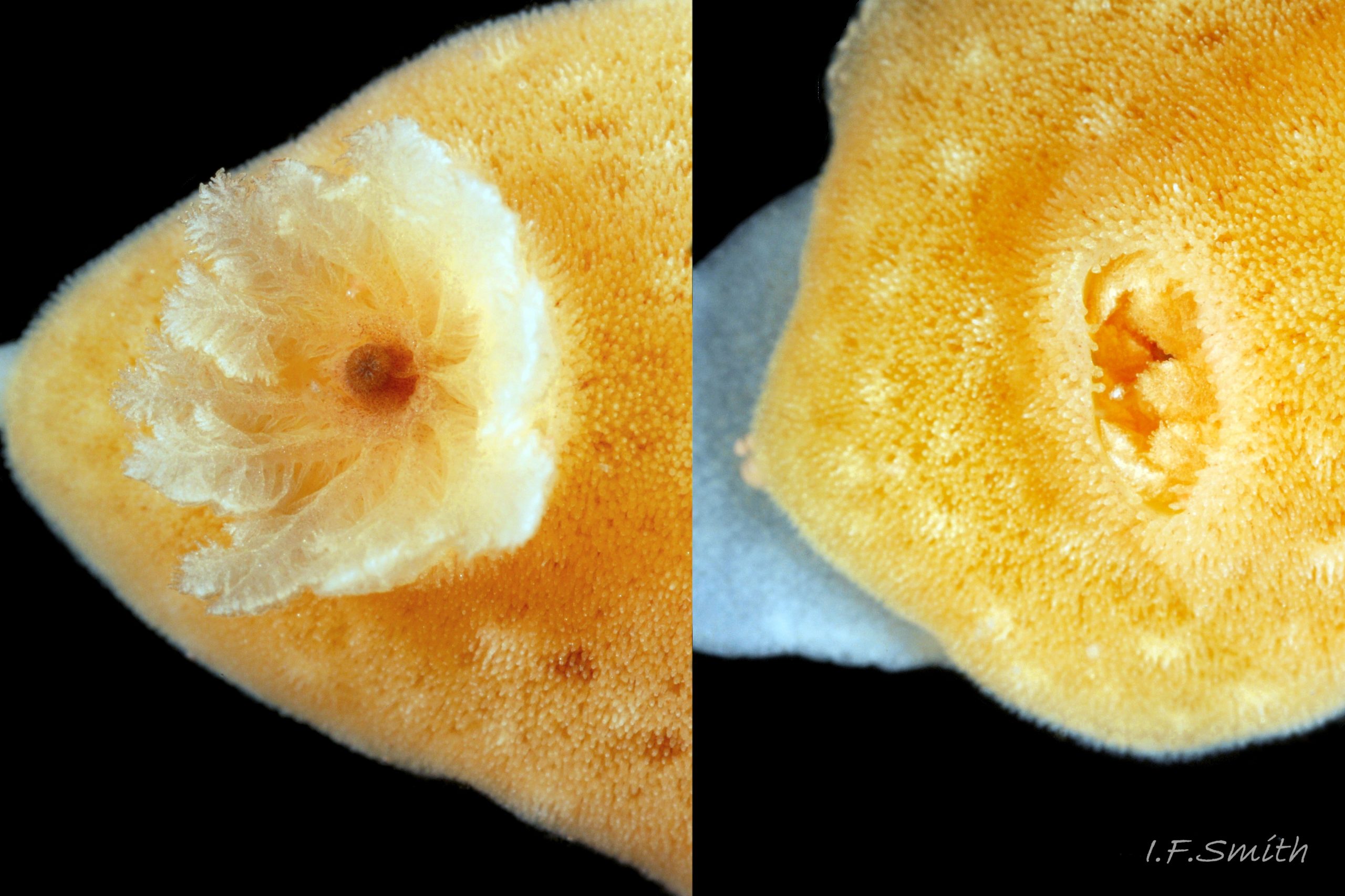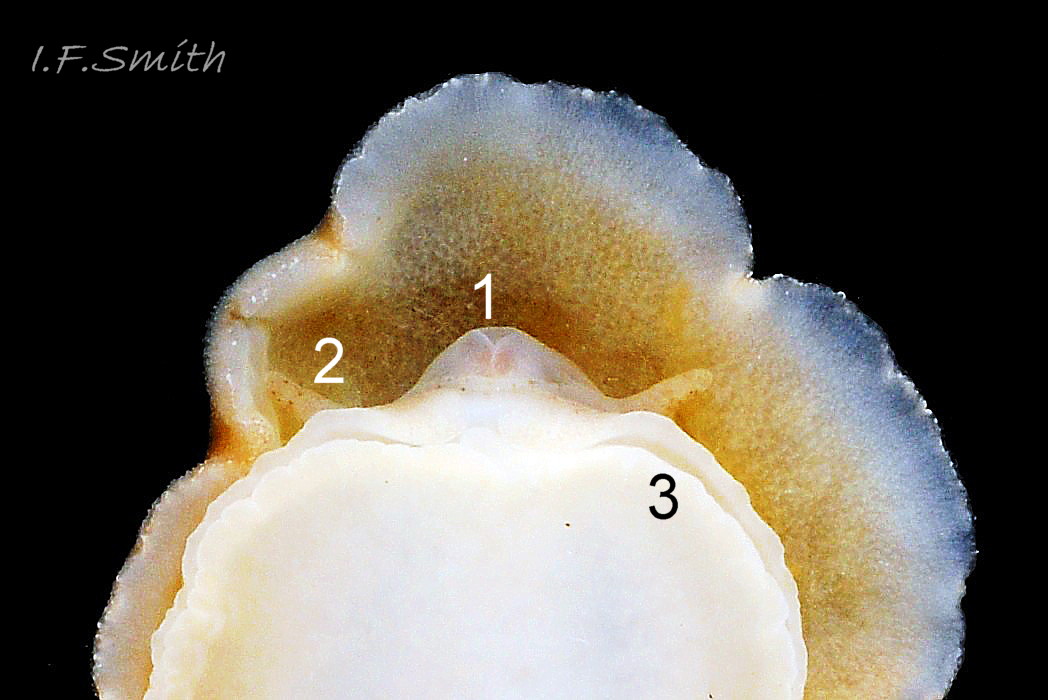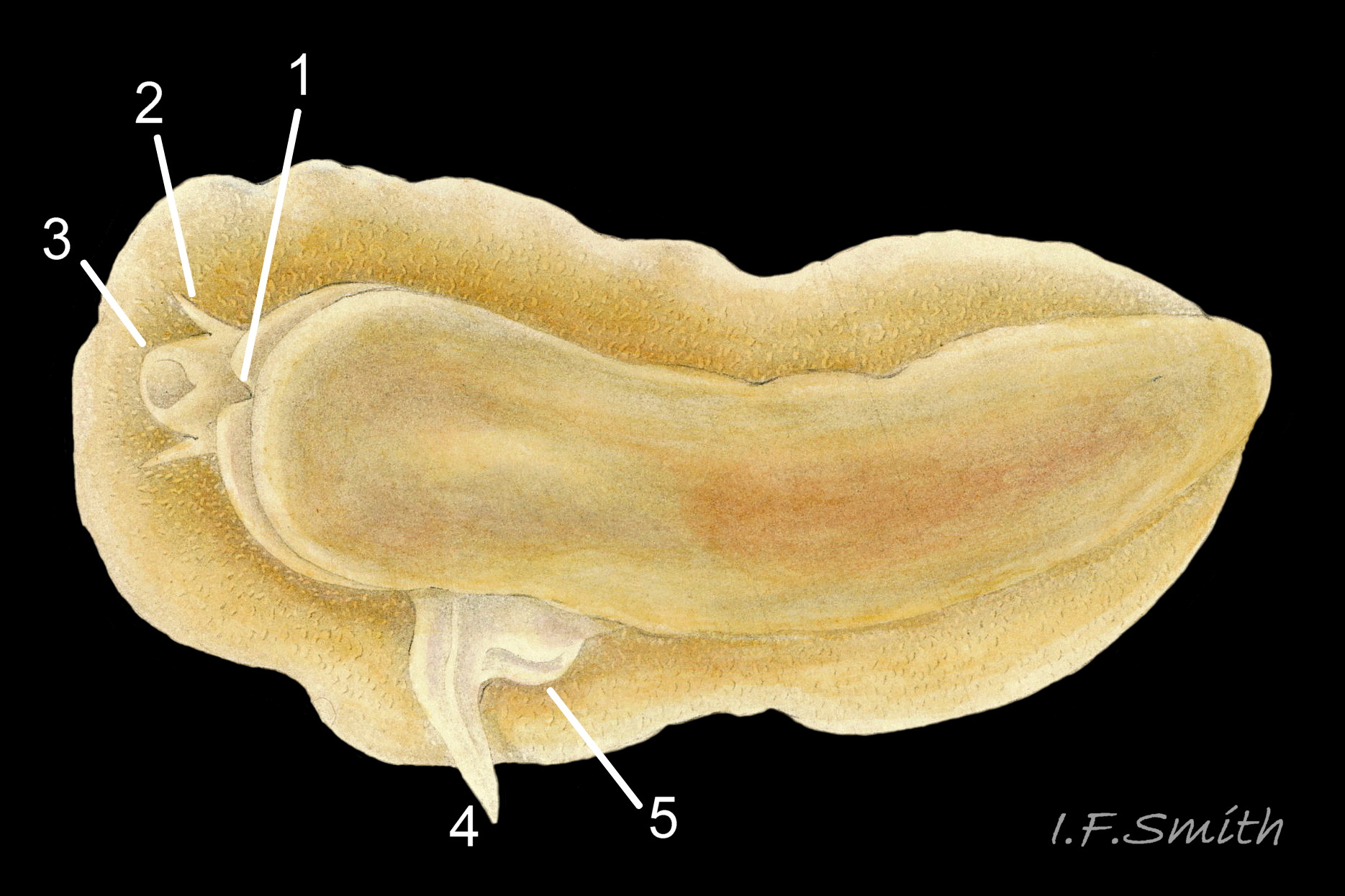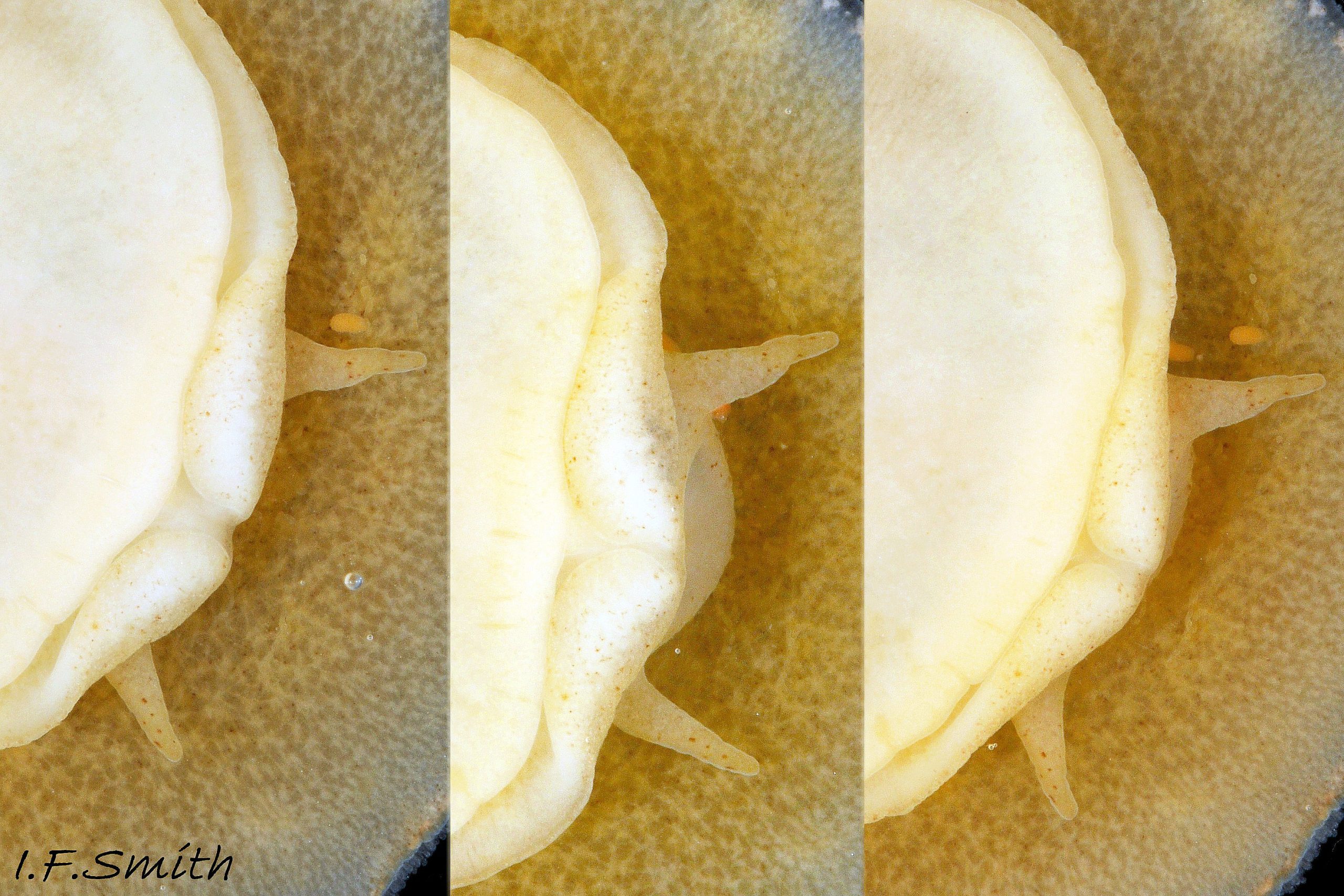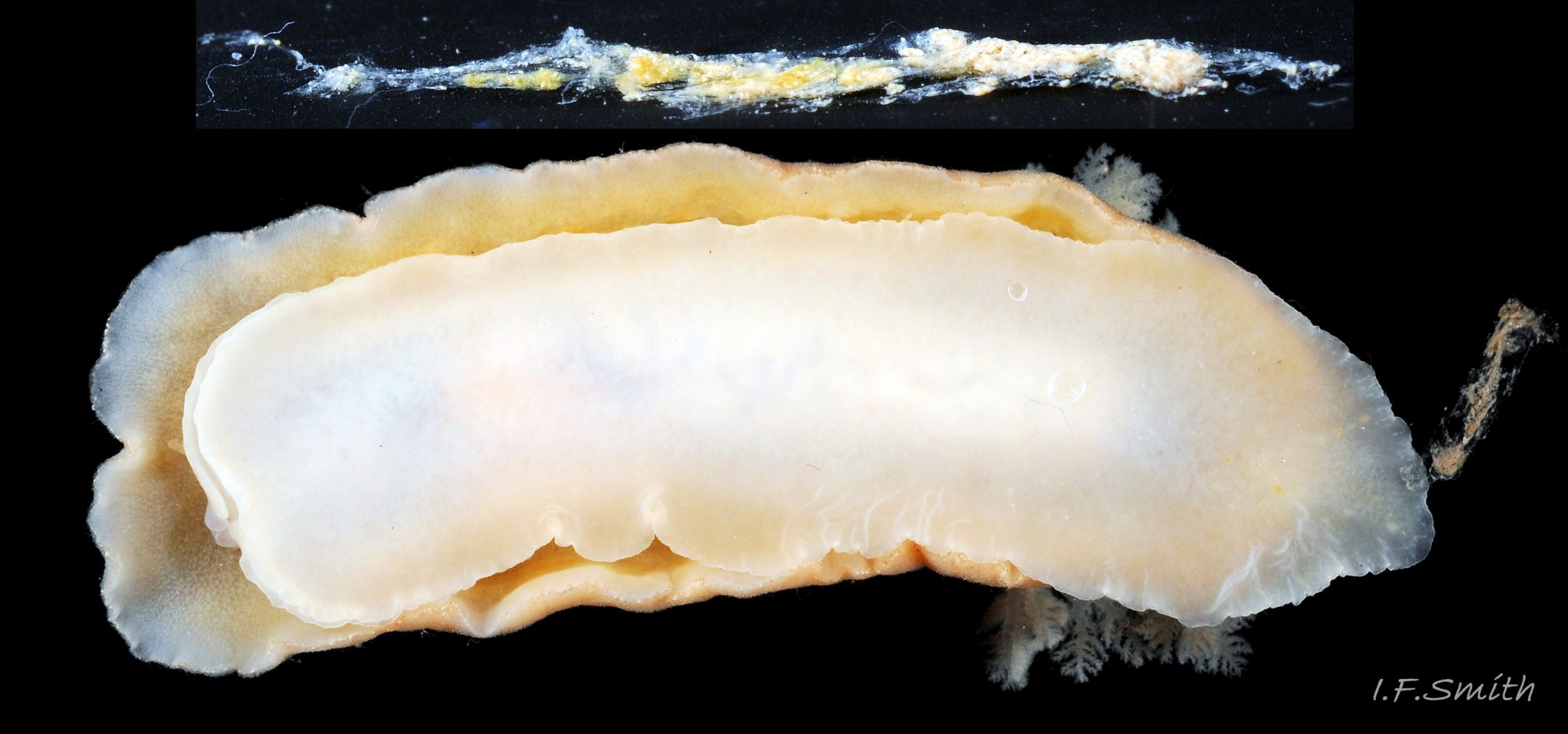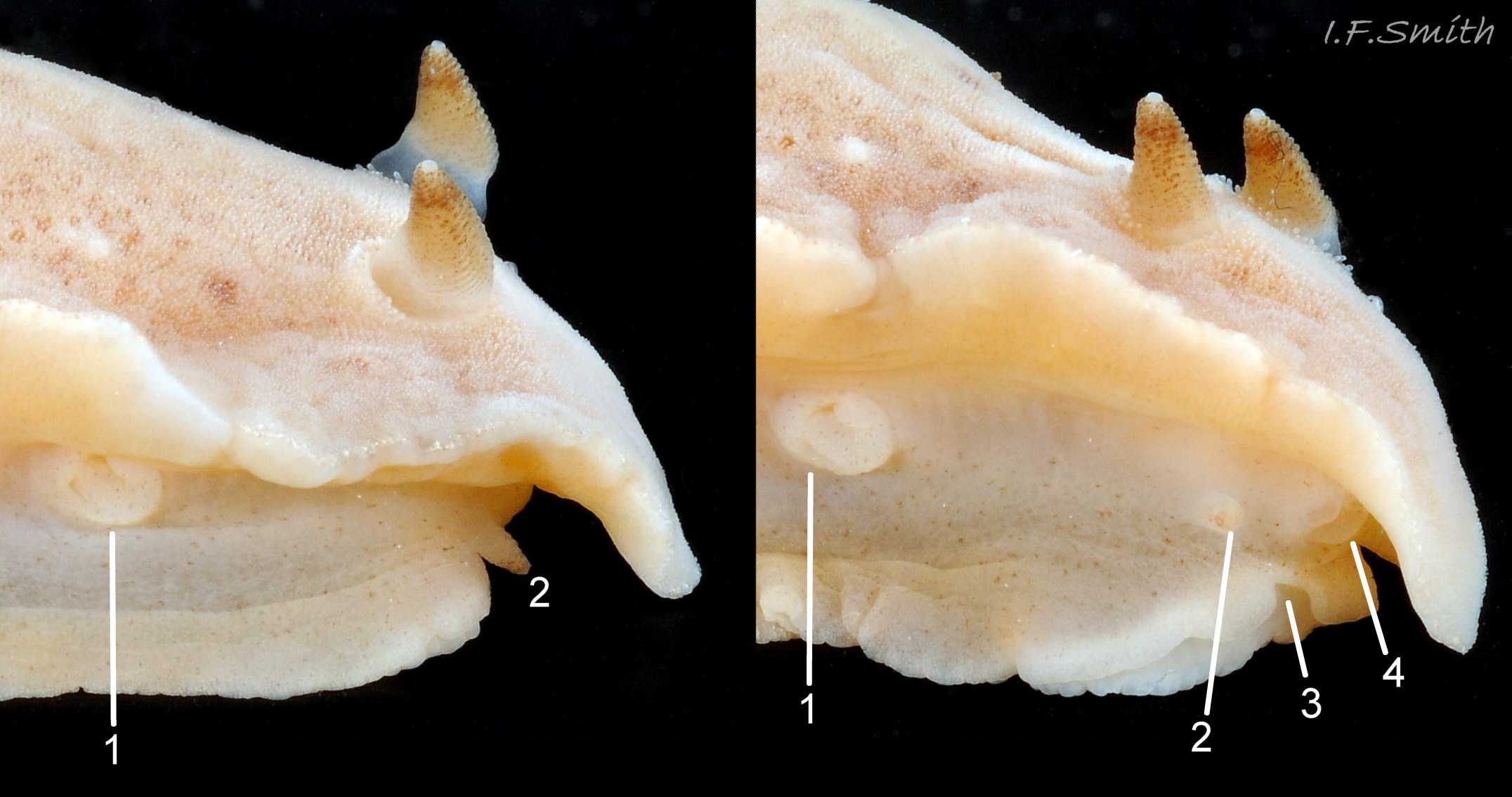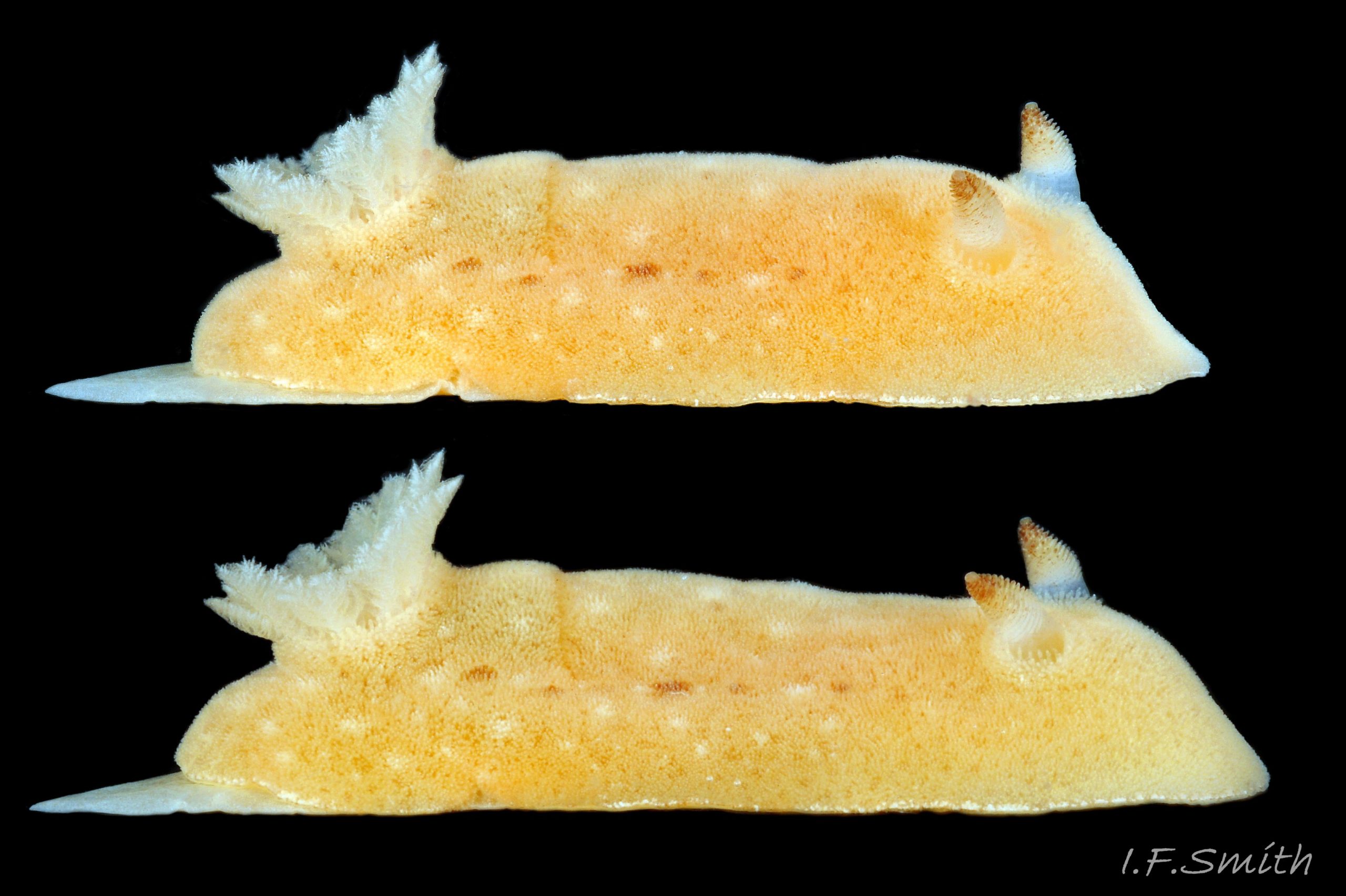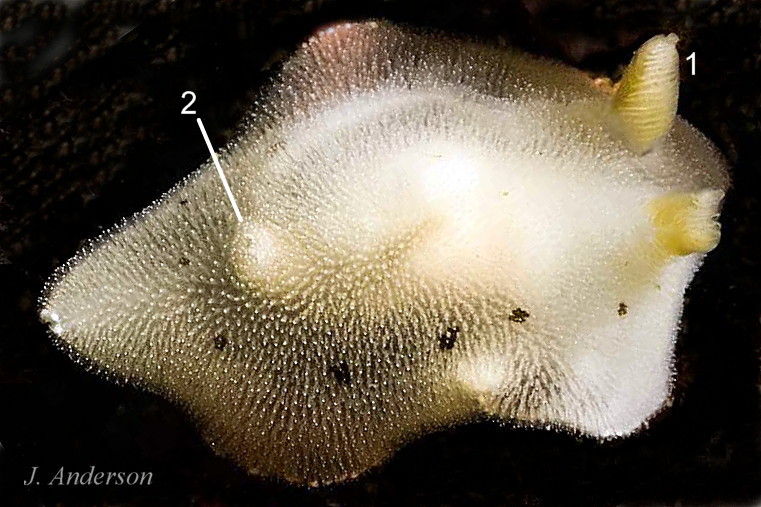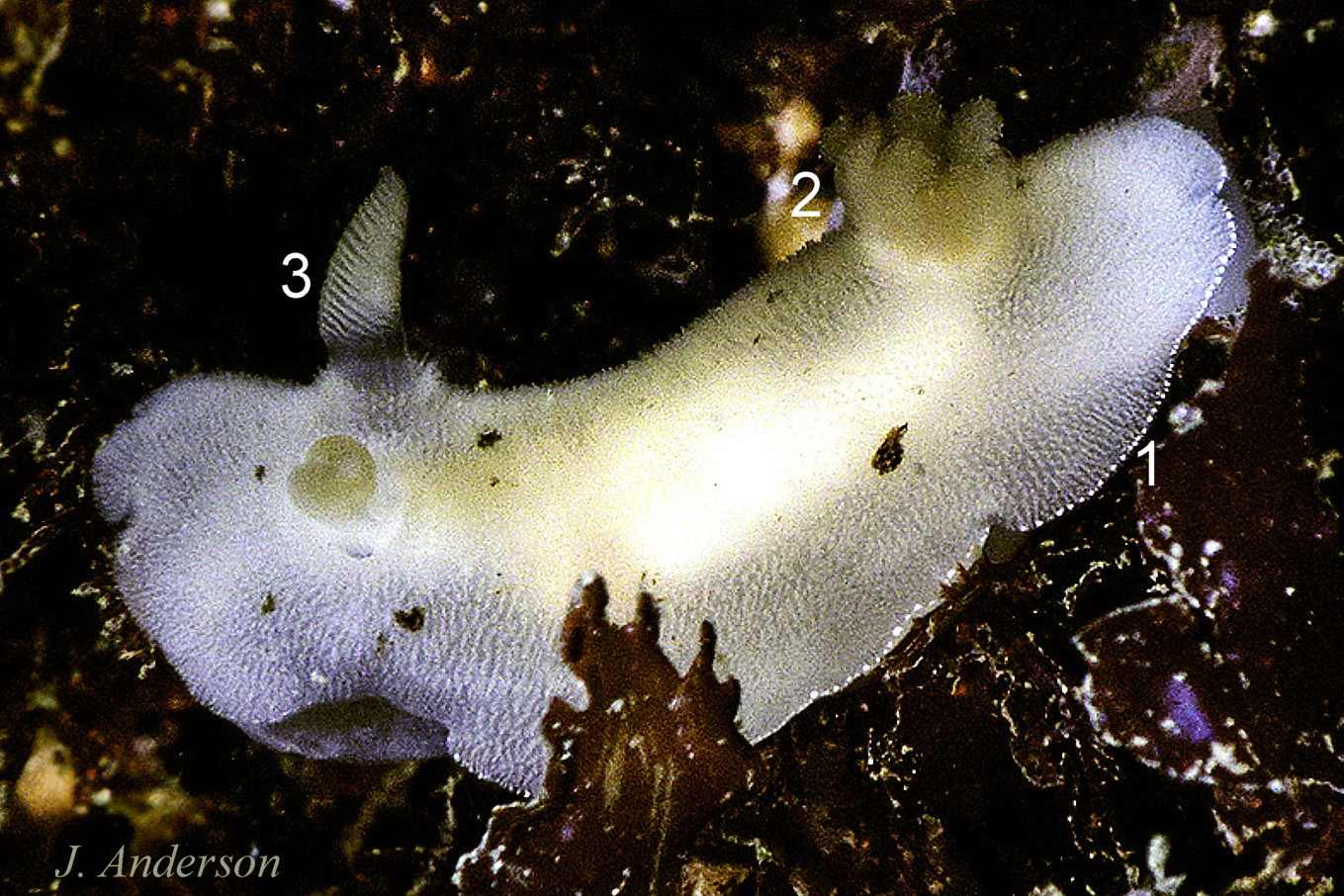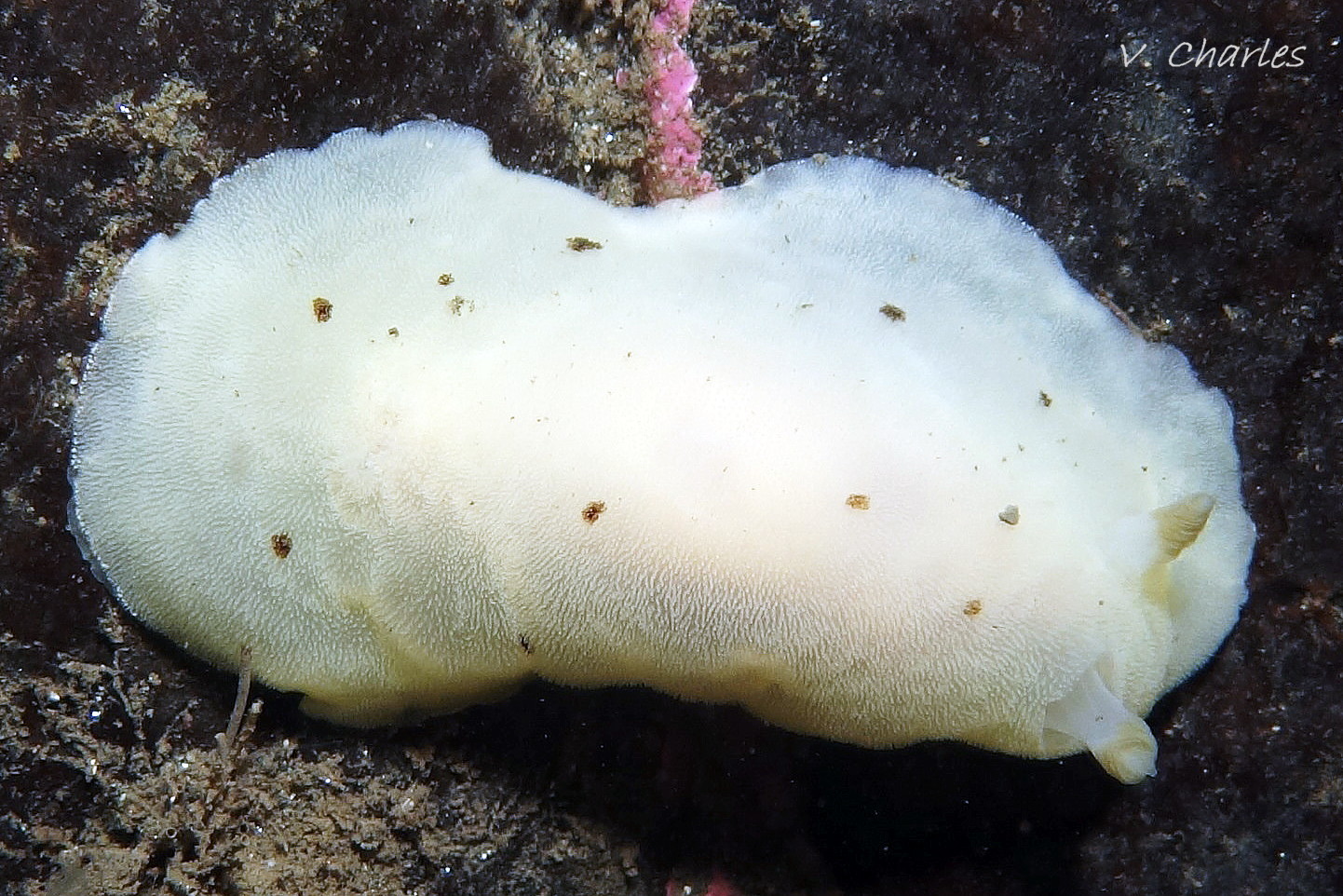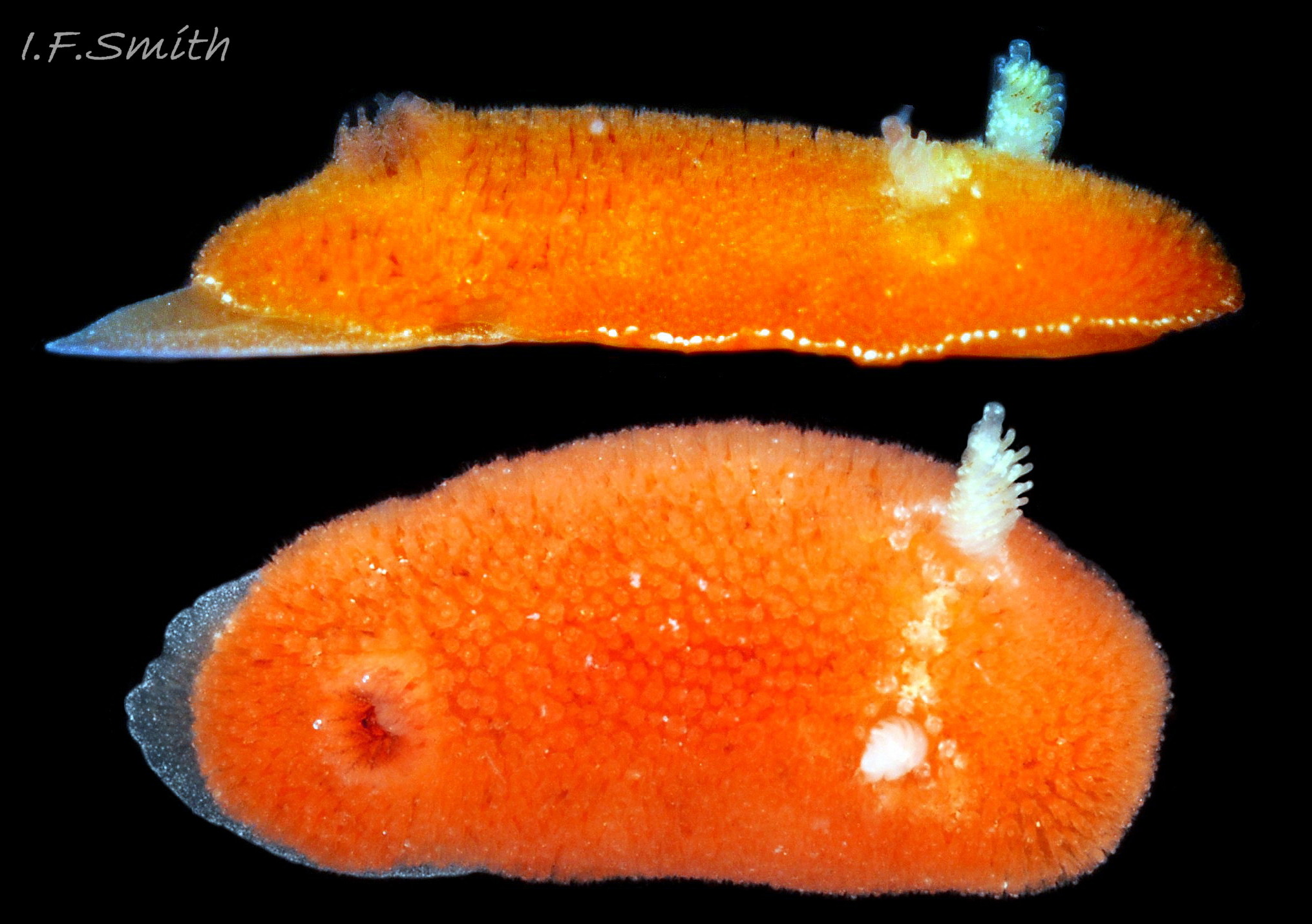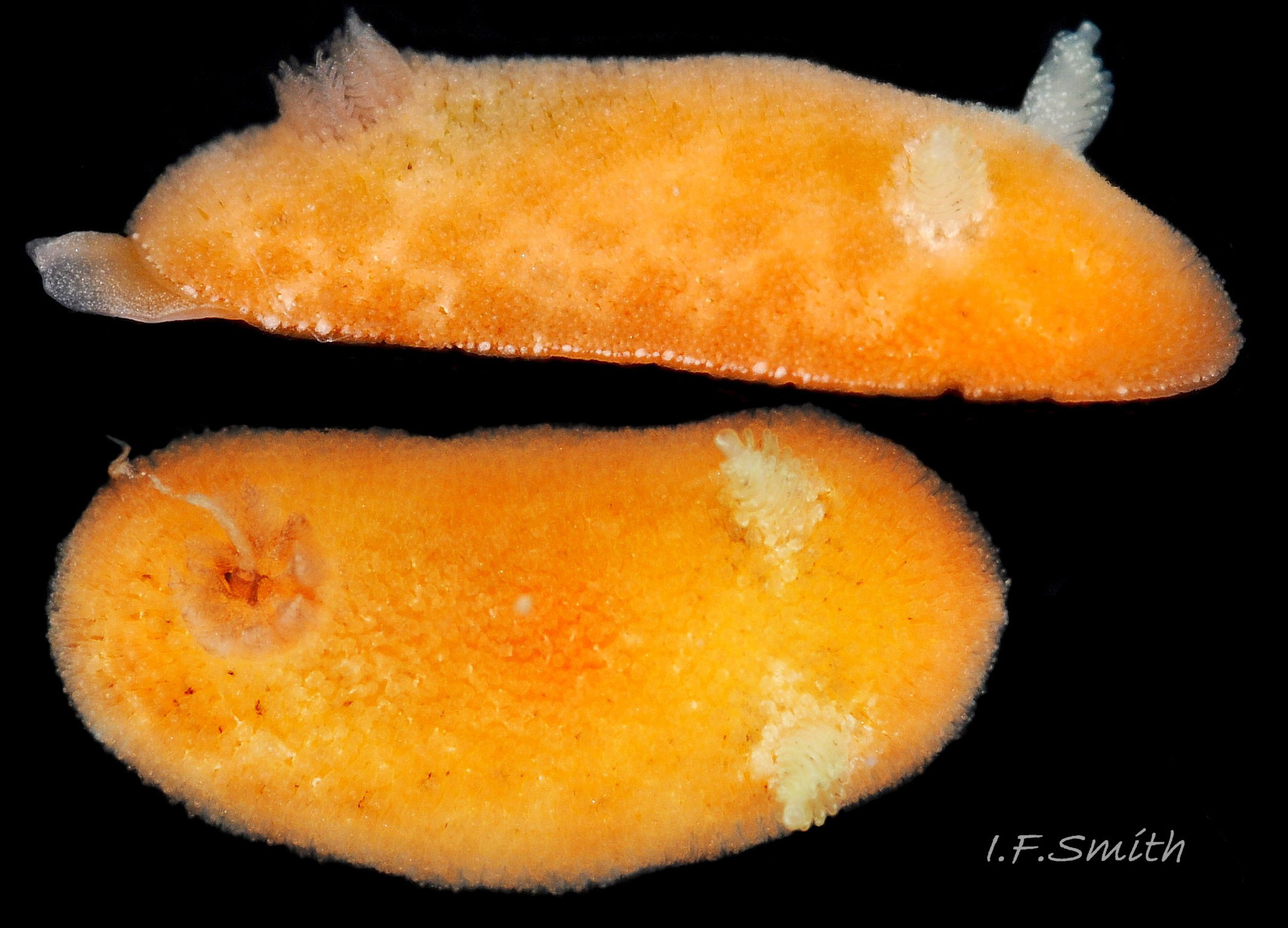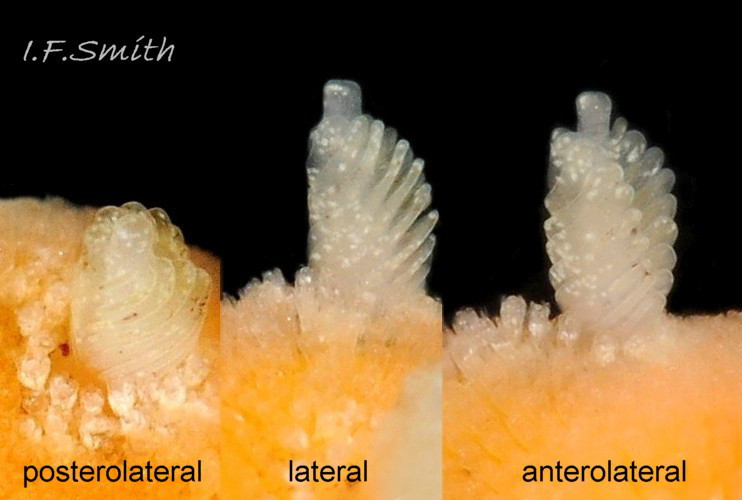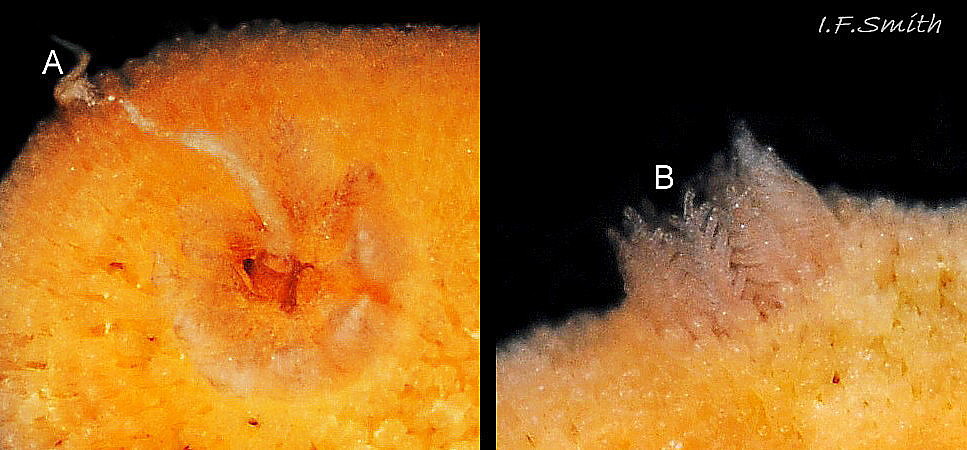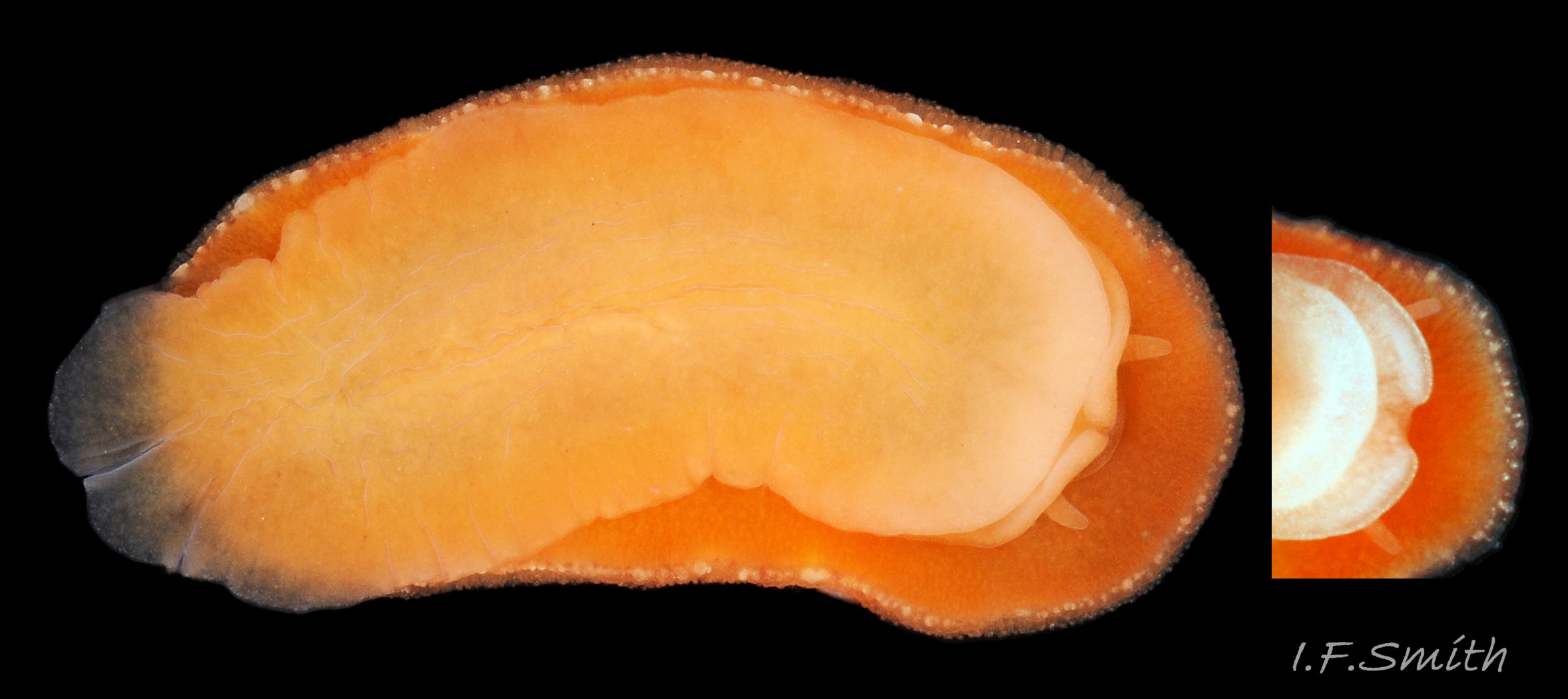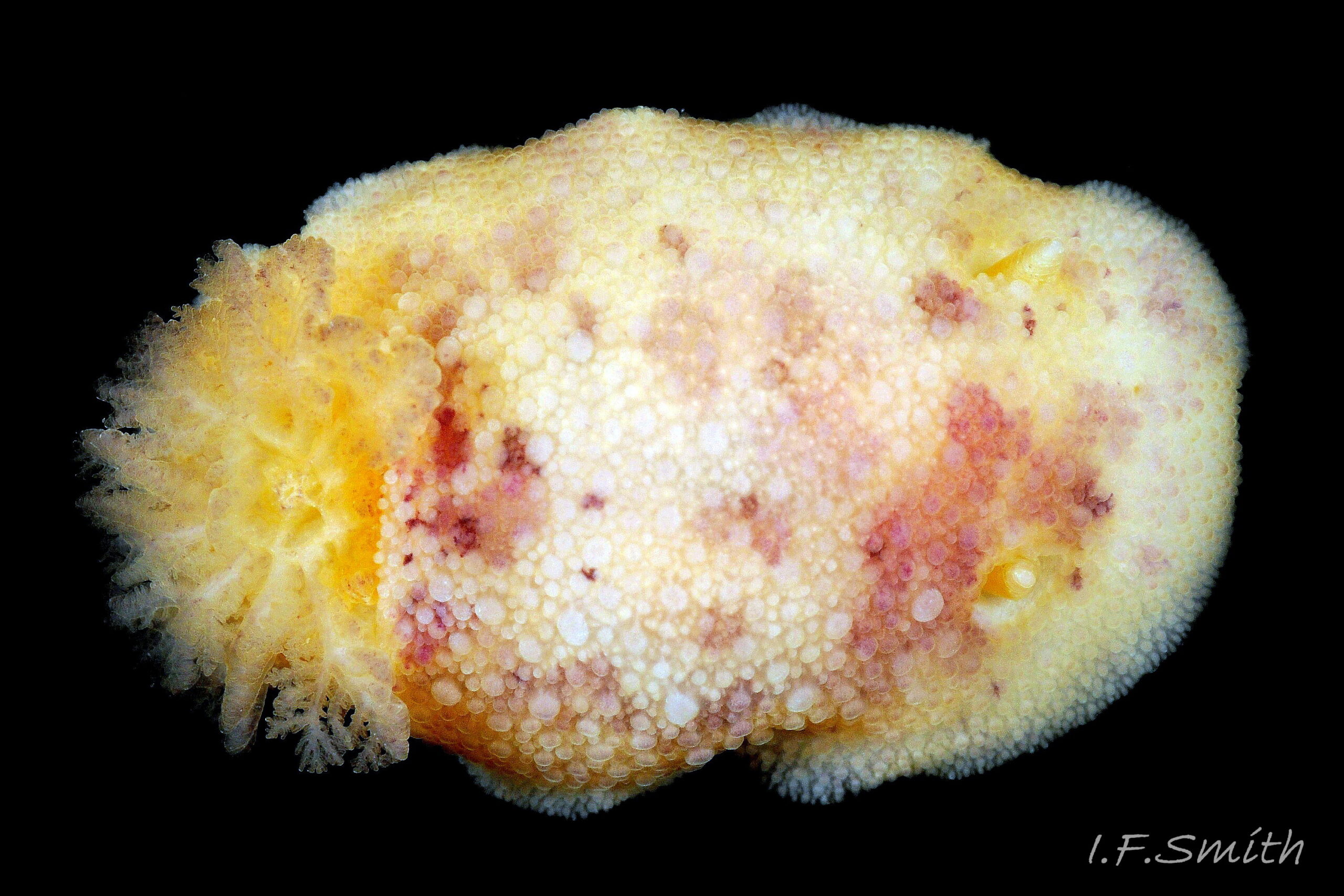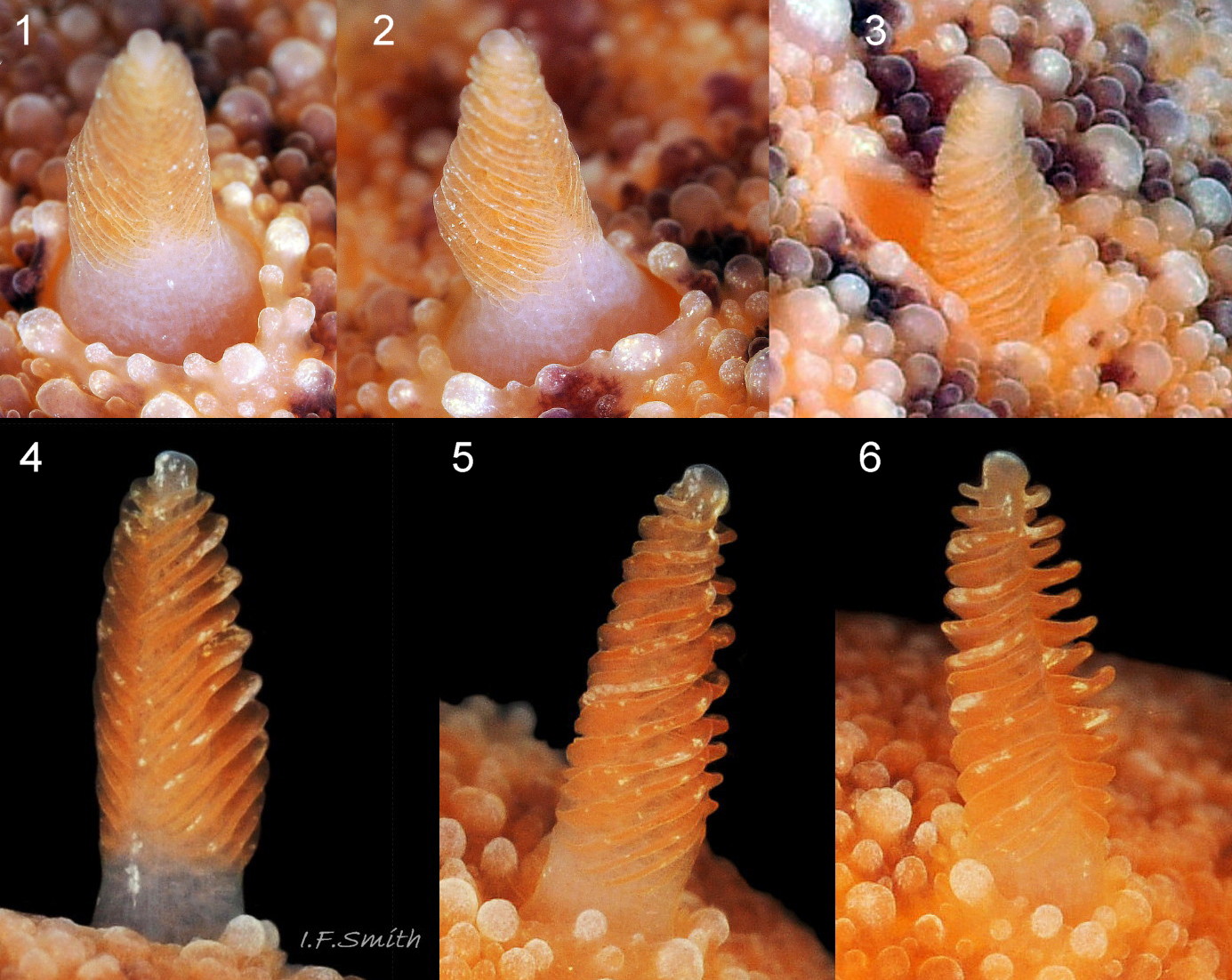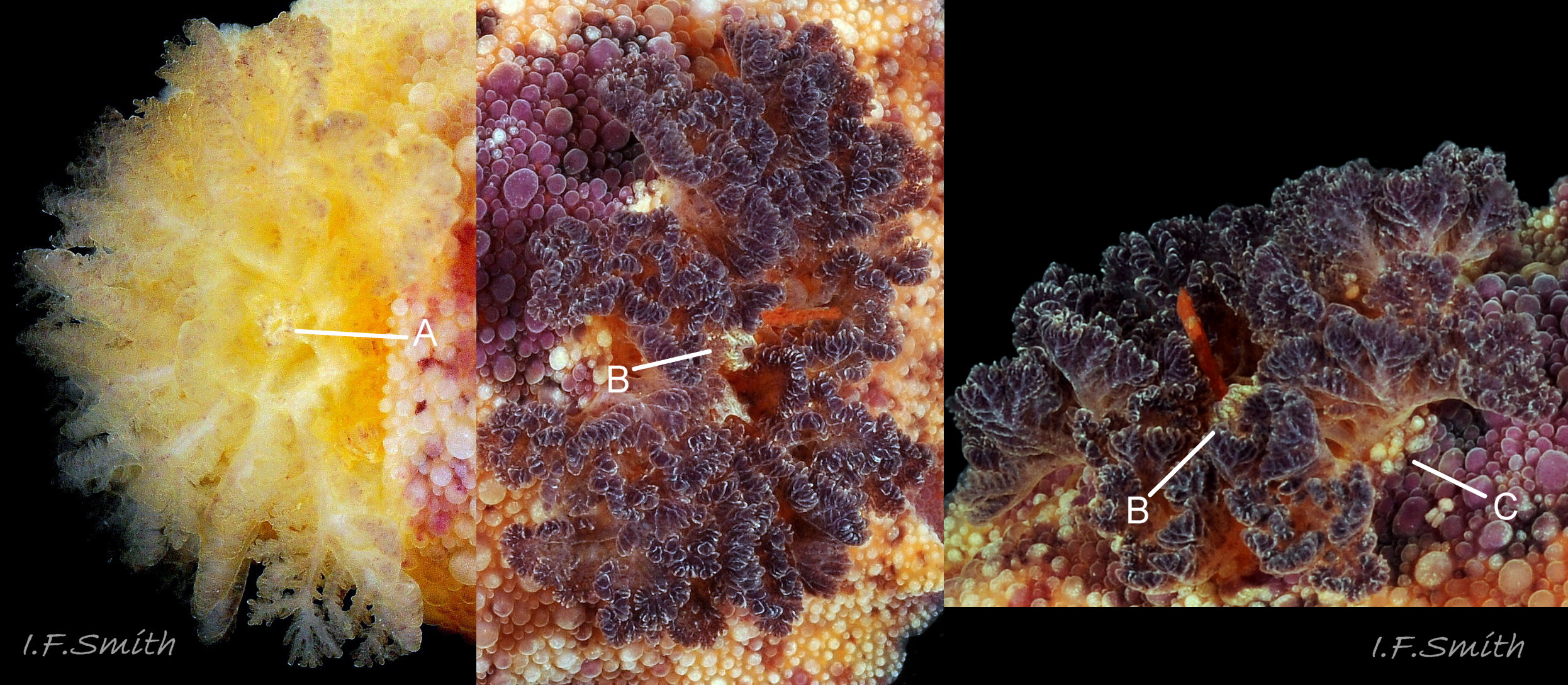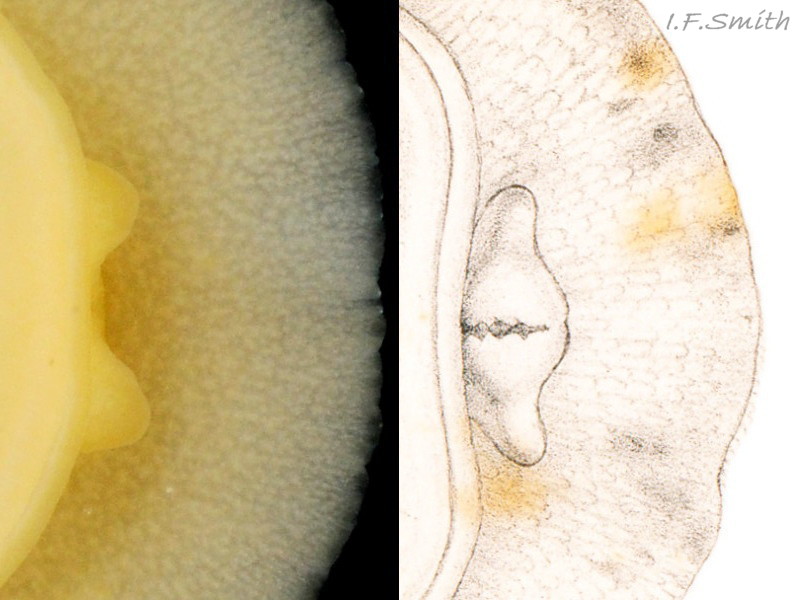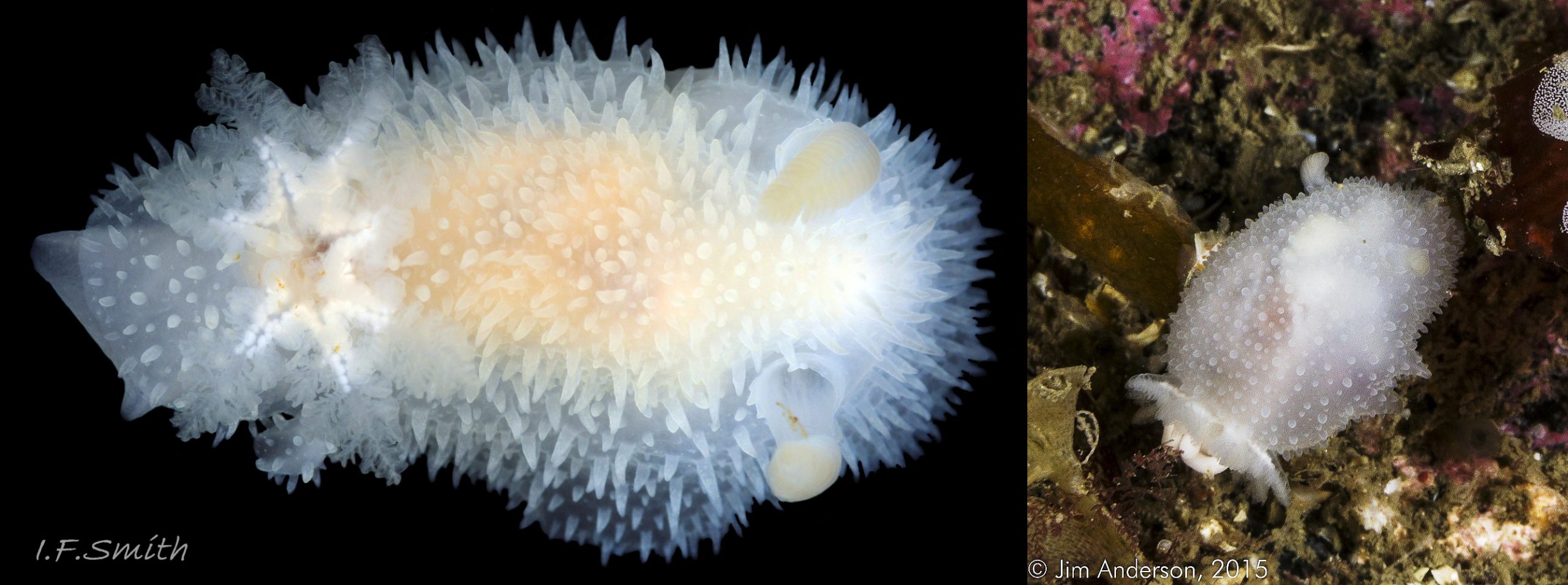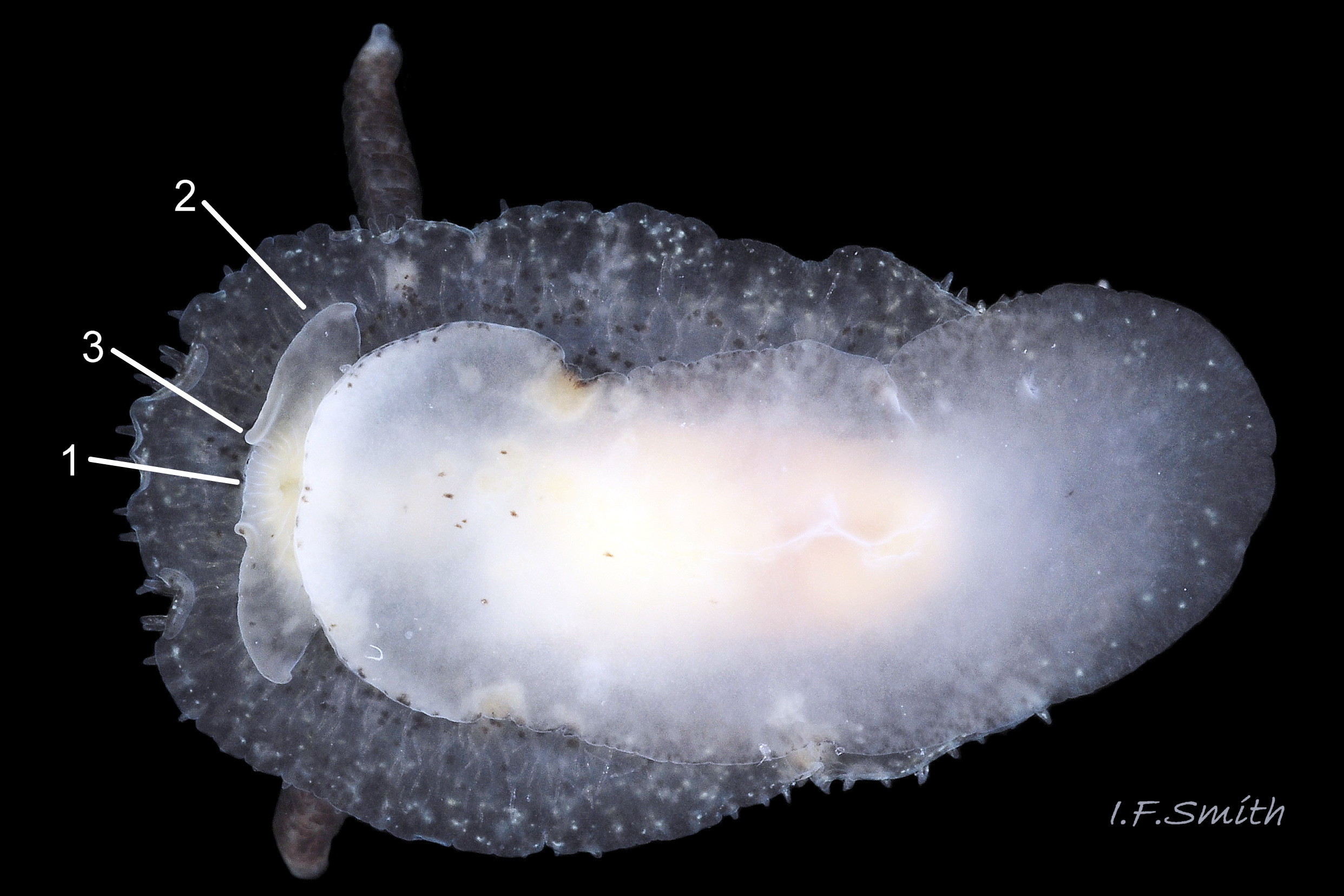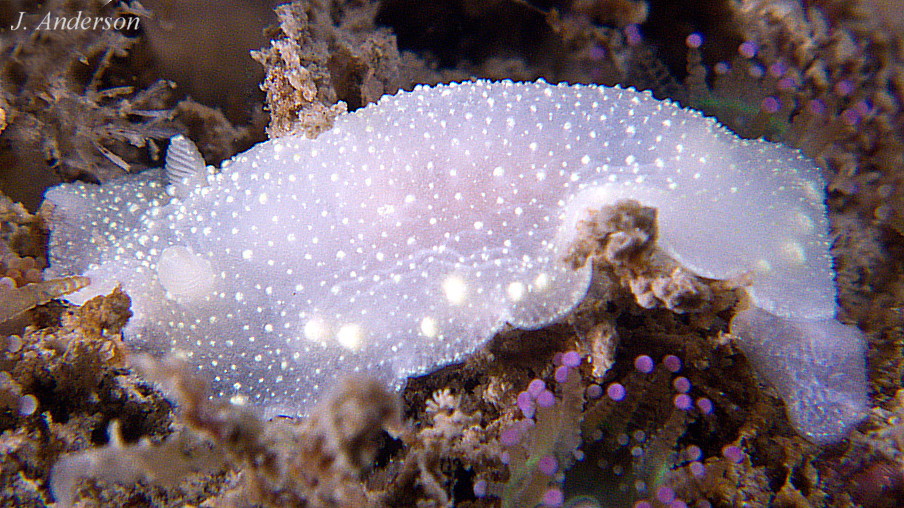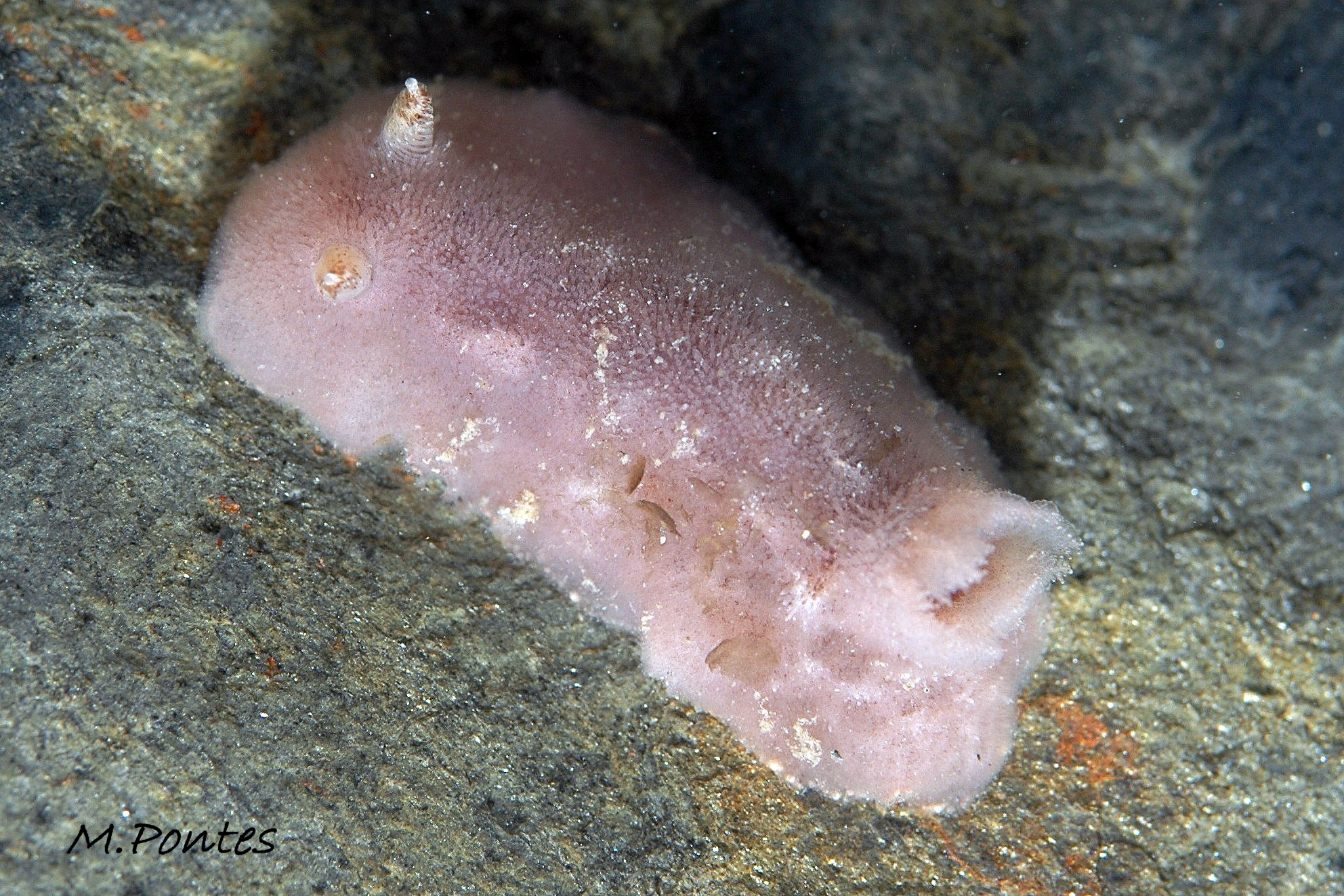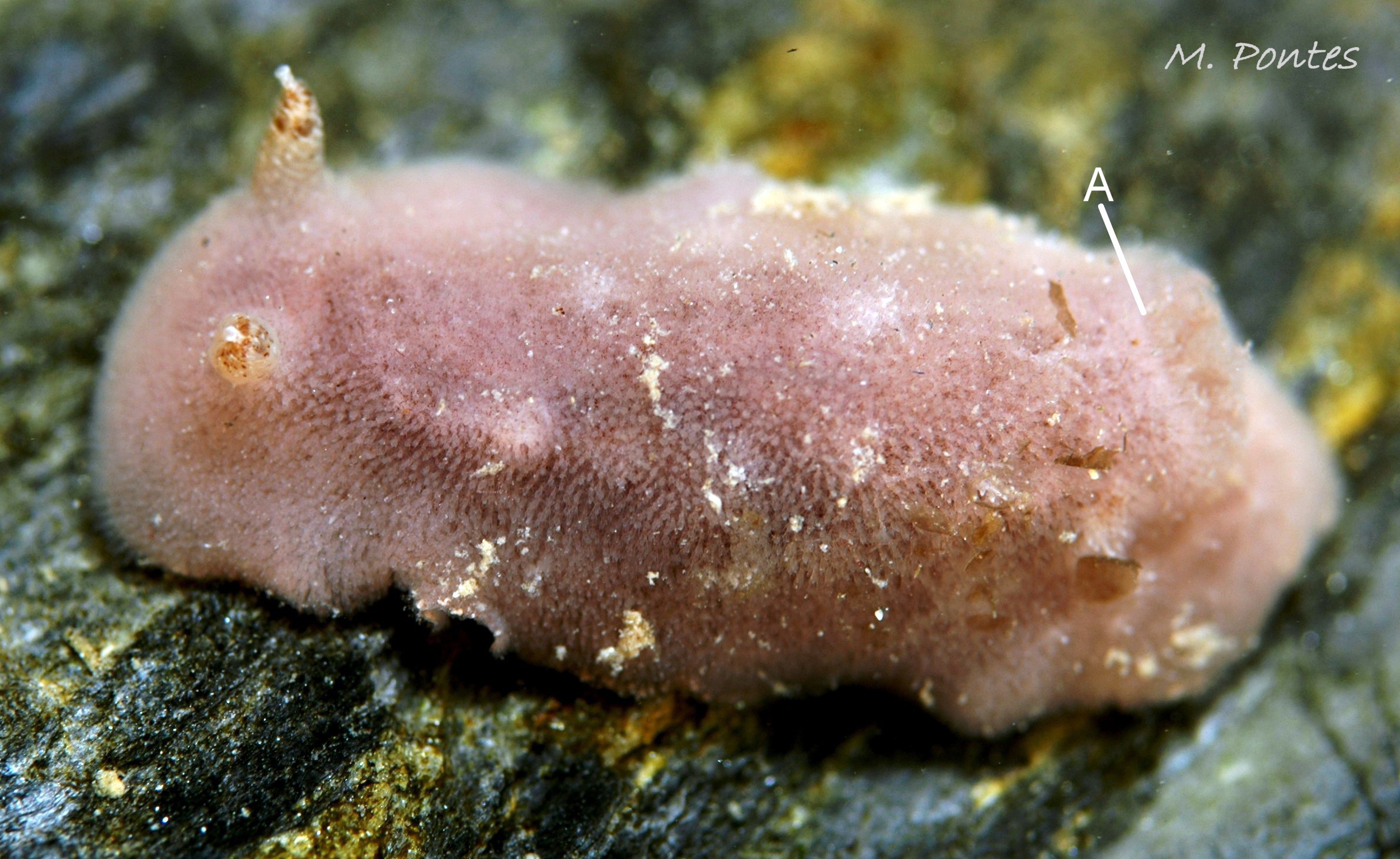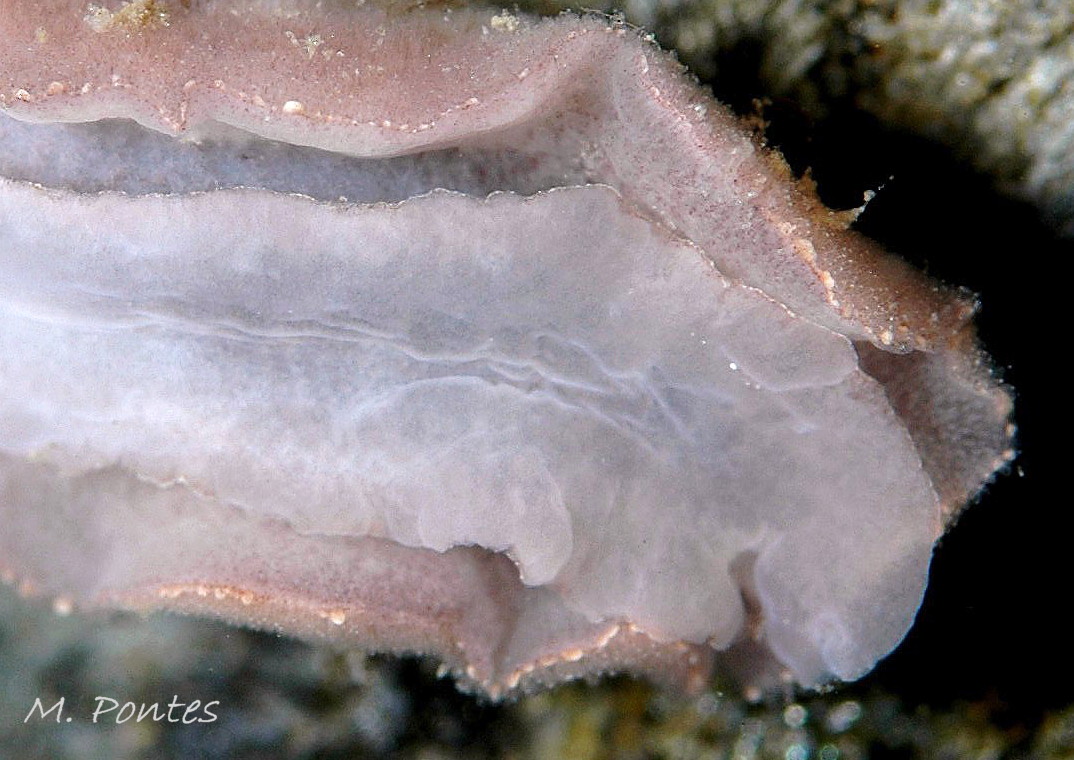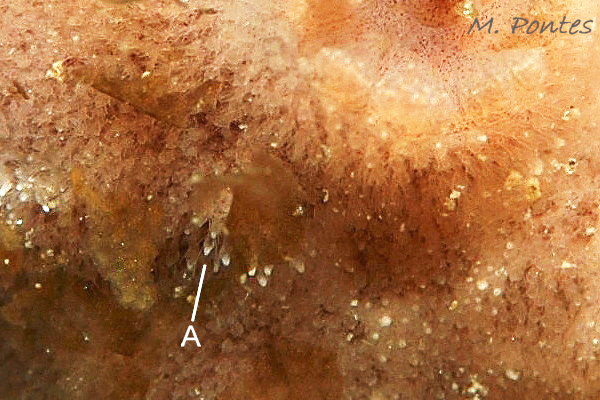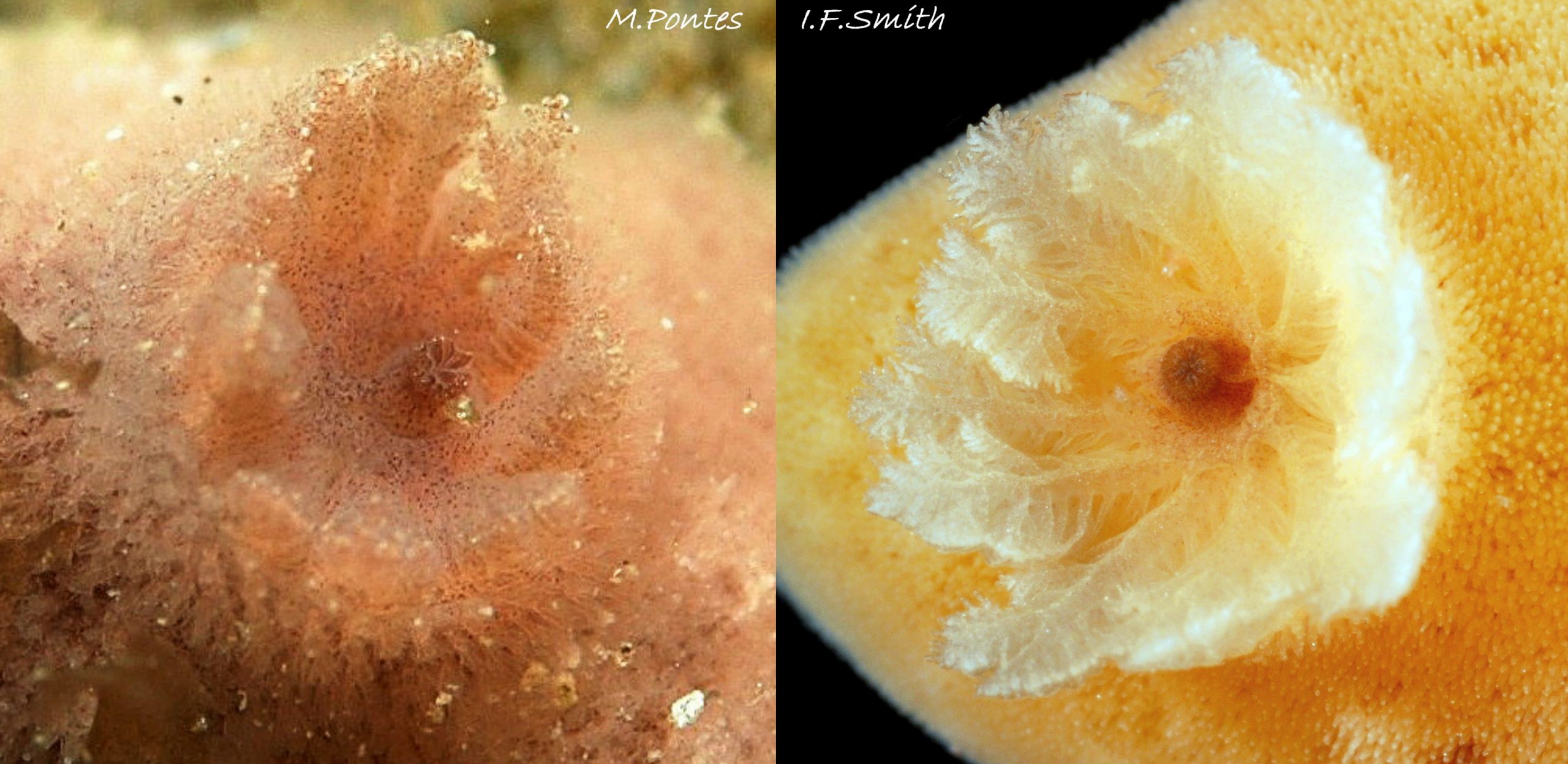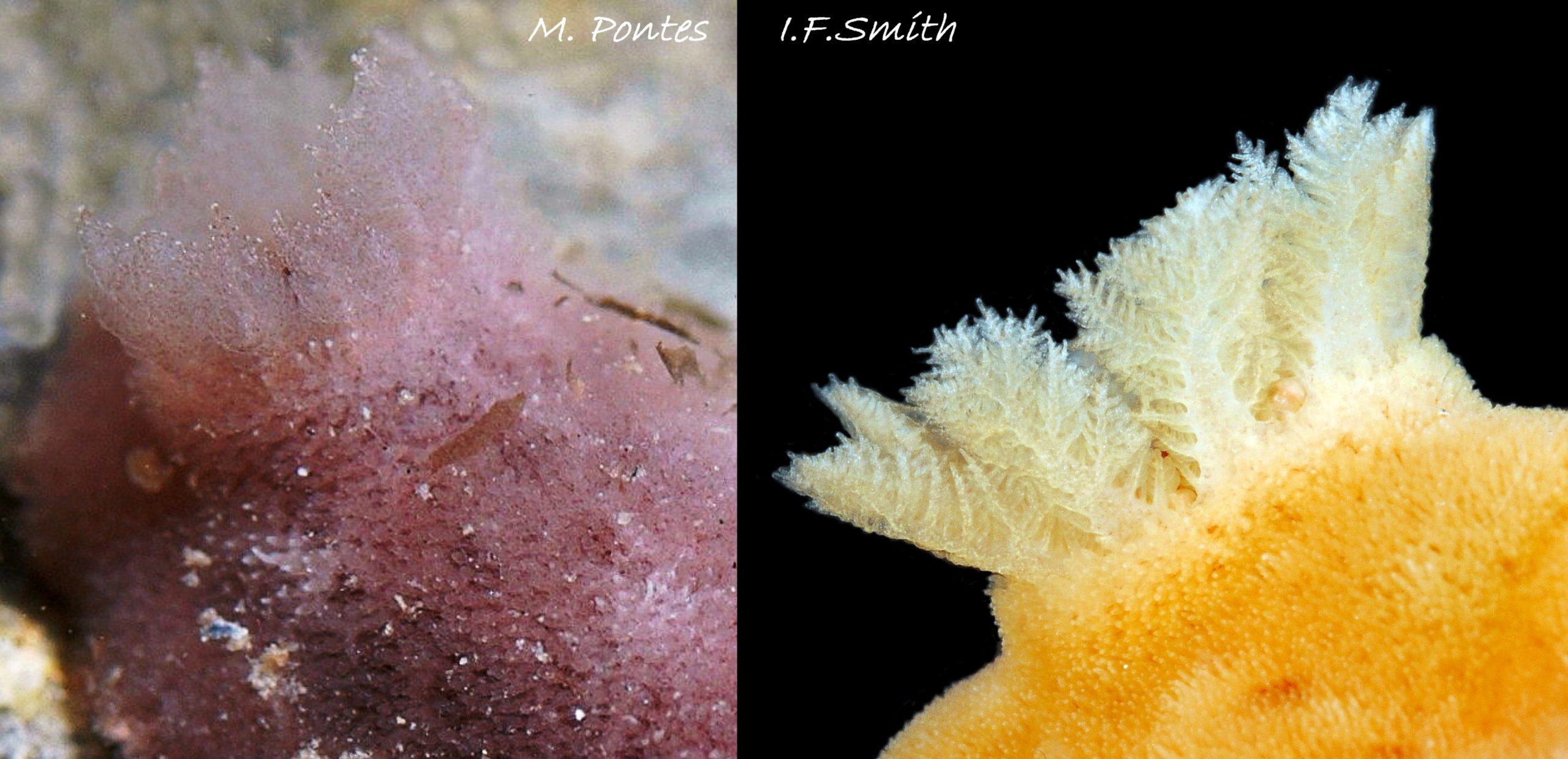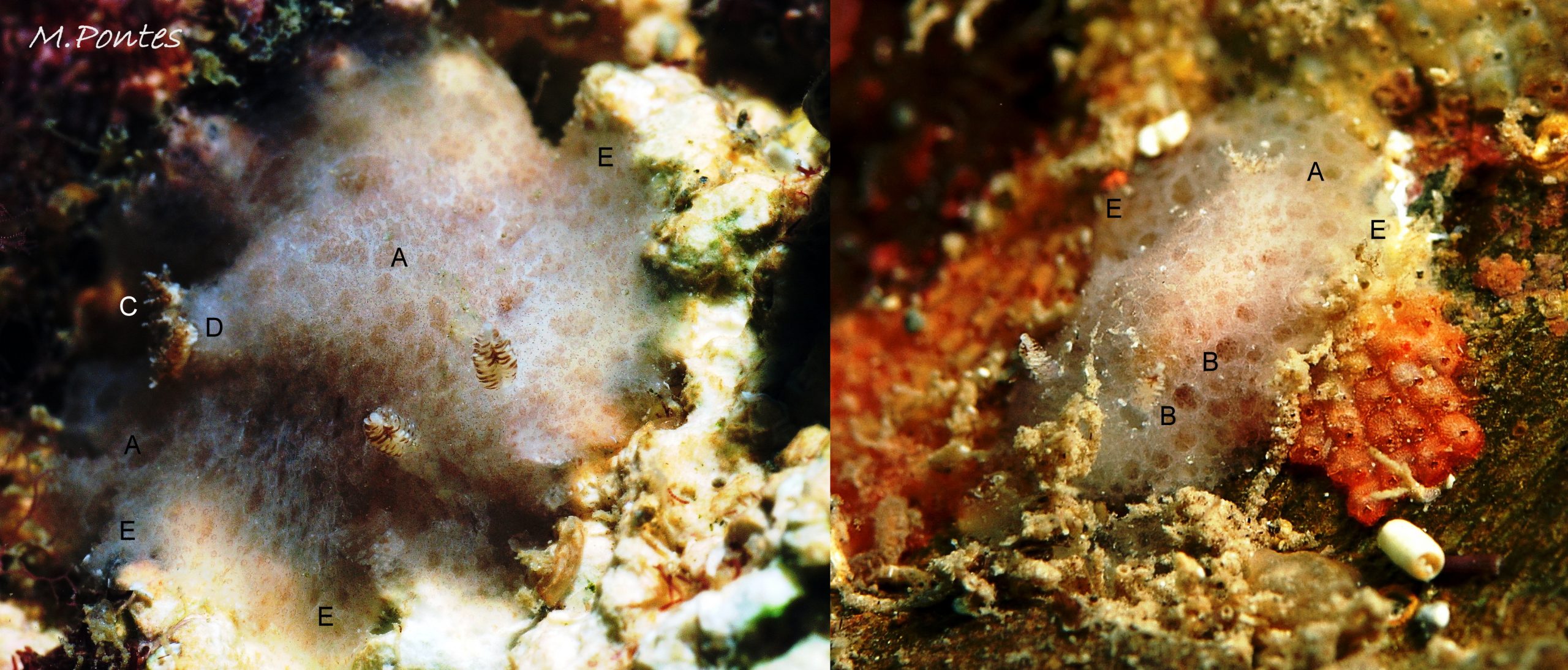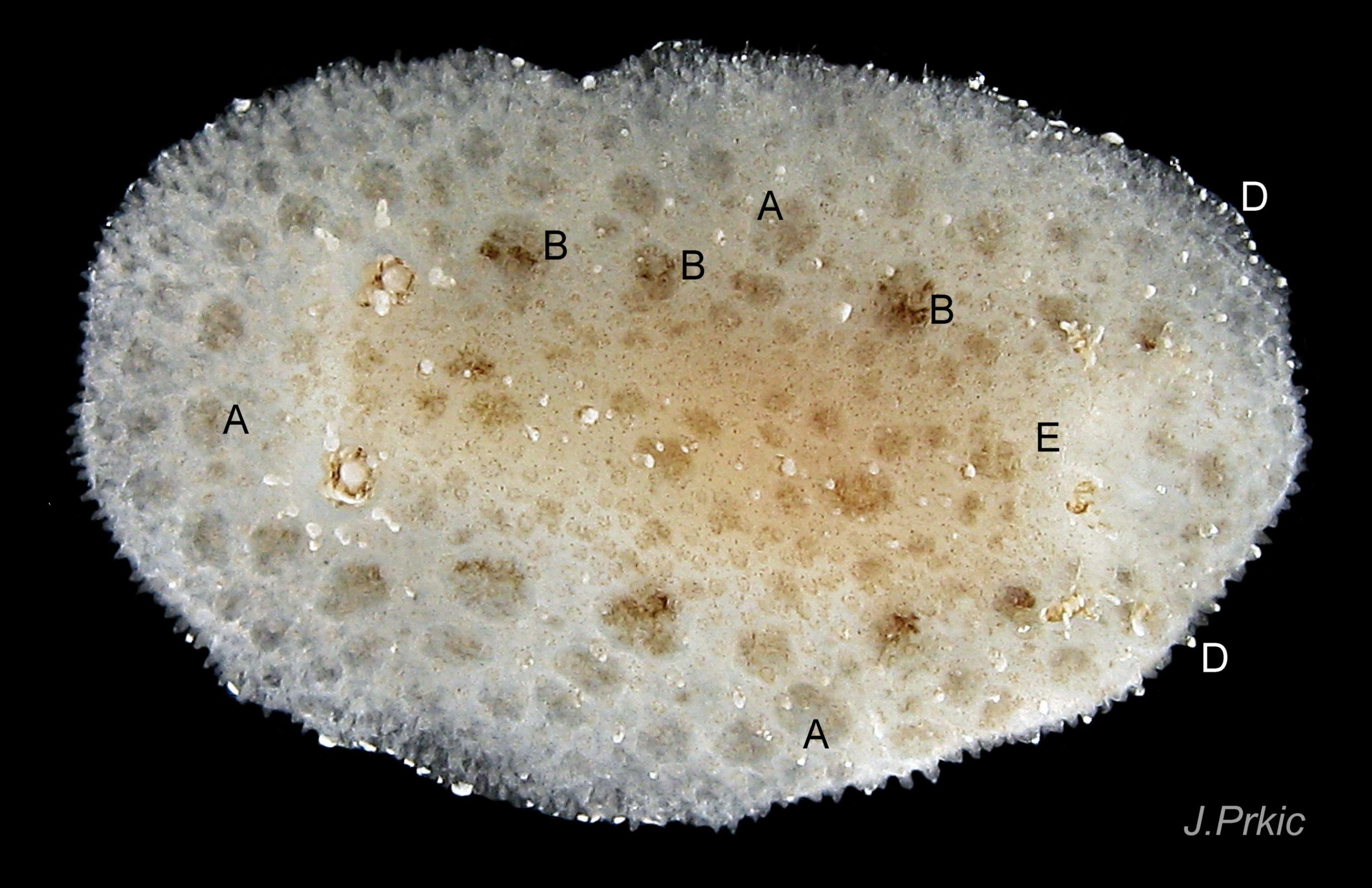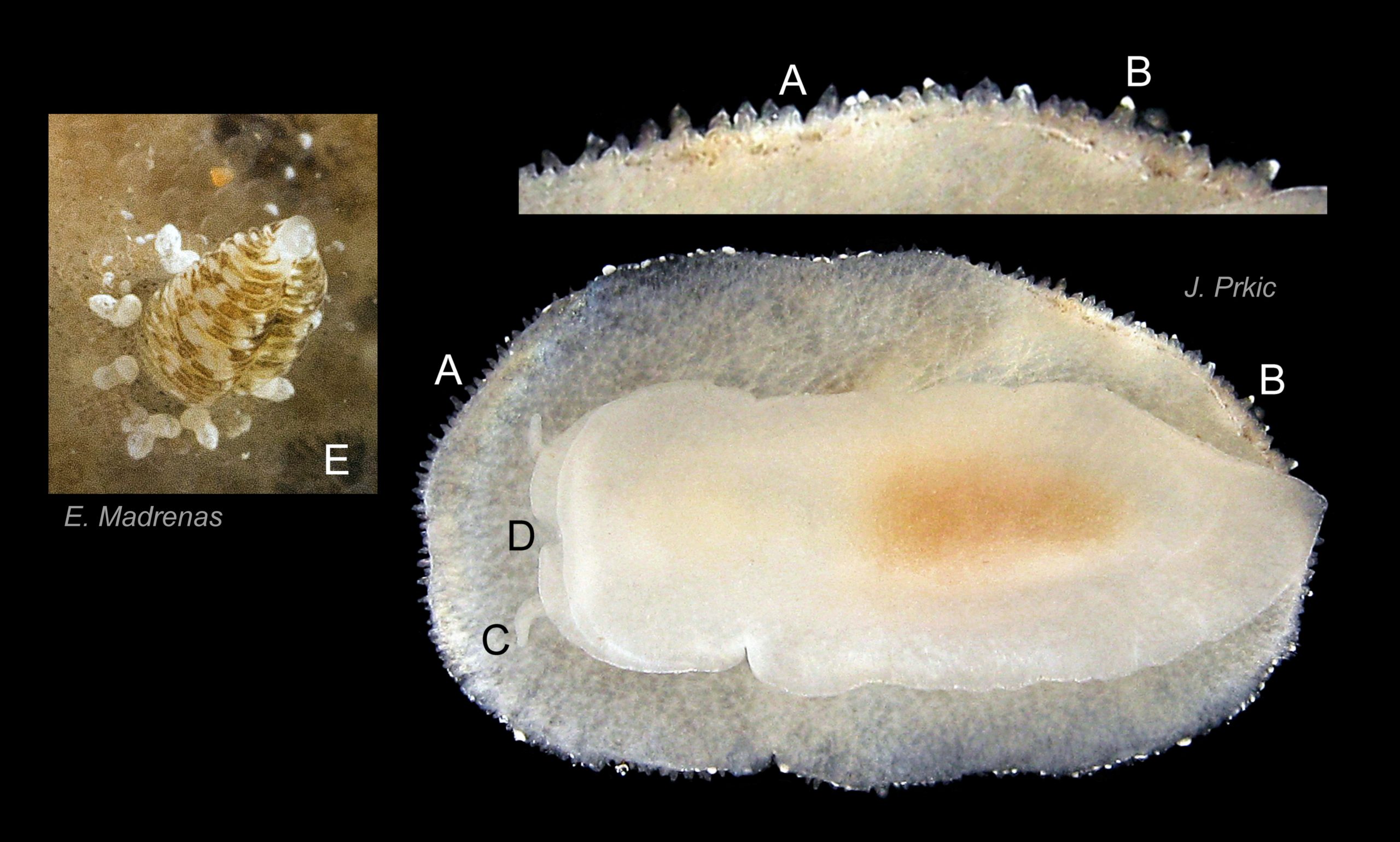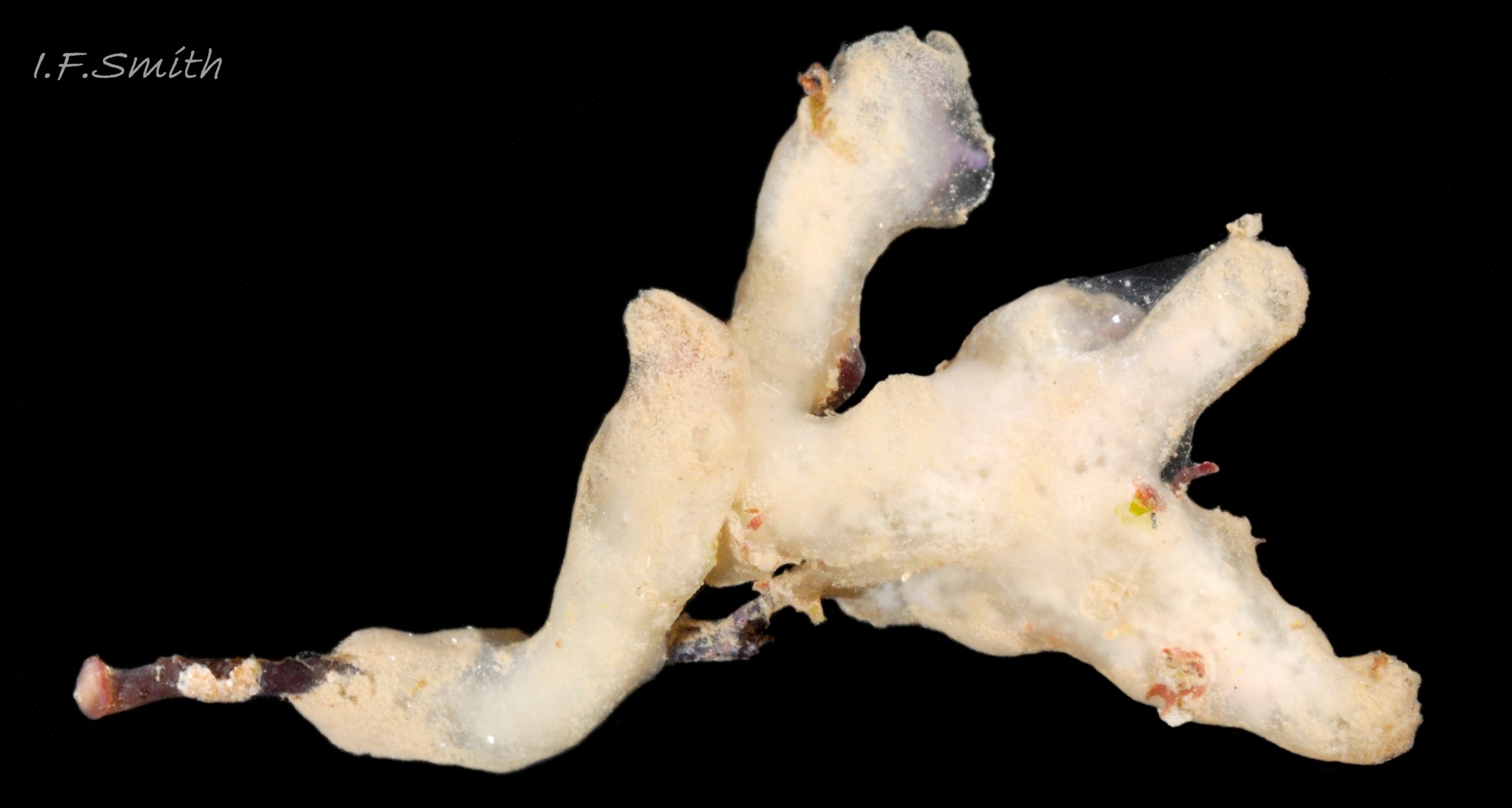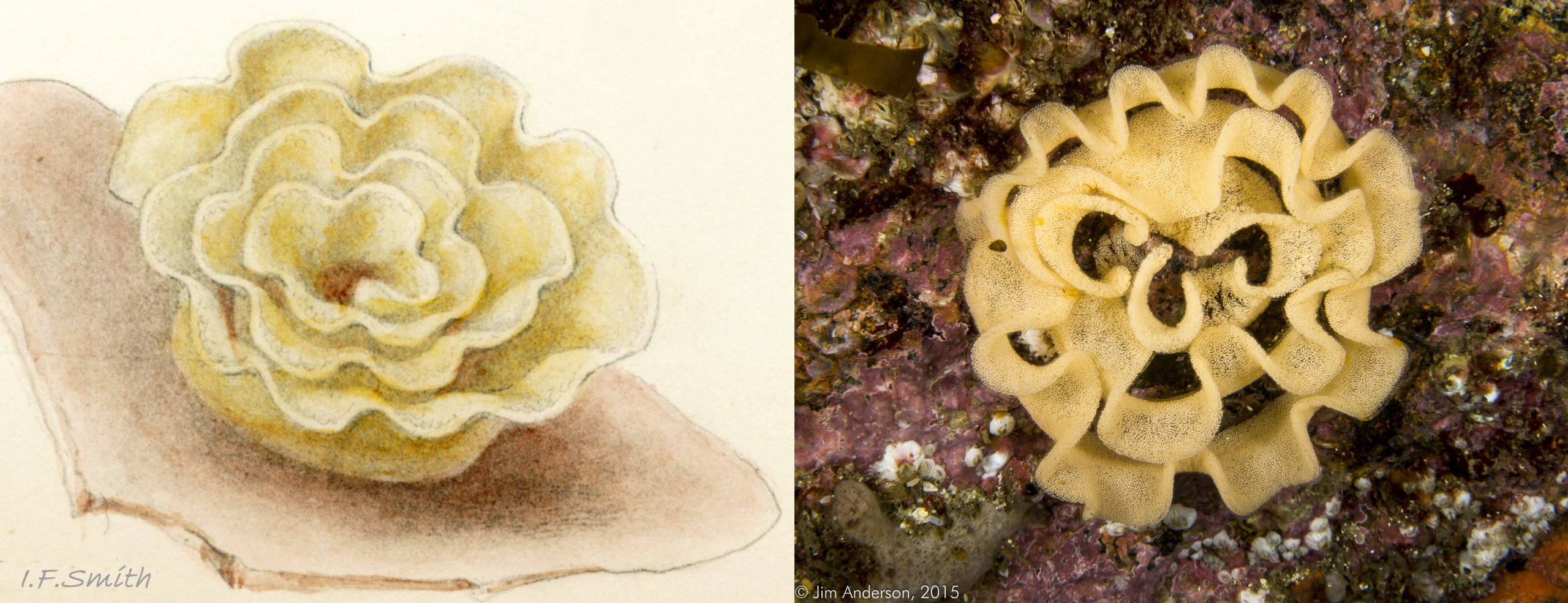Click image to enlarge with full caption. Main text below slider.
Jorunna tomentosa (Cuvier, 1804)
PDF available at www.researchgate.net/publication/356760098_Jorunna_toment…
Current taxonomy: World Register of Marine Species (WoRMS)
www.marinespecies.org/aphia.php?p=taxdetails&id=140166
Synonyms: Doris tomentosa Cuvier, 1804; Doris johnstoni Alder & Hancock, 1845.
Meaning of name:
Jorunna = possibly named after Jórunn,a woman in the Icelandic Laxdaela Saga.
tomentosa (Latin) = like cushion stuffing. i.e. soft and yielding.
Vernacular: Schwamm-Sternschnecke (German); satijnslak (Dutch);
GLOSSARY below.
Key identification features
Sequencing of DNA segregated a previously unrecognised species, Jorunna artsdatabankia (Neuhaus et al, 2021) from a complex previously regarded as J. tomentosa. Other species of Jorunna occur in Iberia and the Mediterranean.
Jorunna tomentosa
1: Length up to 30 mm (Neuhaus et al, 2021), 55 mm (Thompson and Brown, 1984), often a similar size to Doris pseudoargus.
2: Dorsally, sandy-brown 01 Jorunna tomentosa, reddish brown, grey-white, grey-cream, yellow 02 Jorunna tomentosa. , yellow cream 03 Jorunna tomentosa , buff-orange, or white 04 Jorunna tomentosa Small opaque white glands are near the periphery of the mantle 03 Jorunna tomentosa but sometimes they are not discernible 01 Jorunna tomentosa. Usually, there are scattered small dark spots, and a few dark blotches in a longitudinal row on each side 05 Jorunna tomentosa; sometimes the blotches are absent, or few and small 11 Jorunna tomentosa and occasionally the small spots are absent.
3: Mantle has crowded, small, match-like caryophyllidia (retractile tubercles) 08 Jorunna tomentosa with a ring of sharp projecting spicules surrounding the rounded apex. The body has a velvety appearance and soft feel.
4: Large yellow-cream to grey gills surround the brown anal papilla 02 Jorunna tomentosa. & 04 Jorunna tomentosa. Gills are often paler than the mantle and sometimes have dark dots.
5: The base of extended gills is surrounded by a distinct collar-like sheath 09 Jorunna tomentosa which closes over the gills when they are retracted into a pit 12 Jorunna tomentosa.
6: Slender tapered oral tentacles 15 Jorunna tomentosa.
7: Convex body with raised profile 07 Jorunna tomentosa.
8: Short, stout rhinophores have a translucent whitish, or slightly tinted, basal stem and a conical, lamellated, yellow-cream to grey, distal part bearing red to brown pigment dots/marks 08 Jorunna tomentosa.
9: Posterior of foot protrudes when in motion 19 Jorunna tomentosa.
Similar species
Jorunna artsdatabankia Neuhaus, Rauch, Bakken, Picton, Pola & Malaquias, 2021. [Early records from Norway, North Sea (offshore), Scotland and Ireland] 20.1 Jorunna tomensosa, 20.2 Jorunna tomensosa & 20.3 Jorunna tomensosa.
1: Up to 40 mm long (Neuhaus et al, 2021).
2: Dorsally, plain yellow to white with sparse, irregularly scattered, small brown spots. Opaque white glands on periphery of mantle, but may not be discernible.
3: Mantle has crowded, small, match-like, retractile tubercles (caryophyllidia) with a ring of sharp projecting spicules surrounding the rounded apex. They are longer than on J. tomentosa, so may look more plush in close view.
4: Gills are concolorous with the mantle. They lack any dark dots.
5: Base of extended gills surrounded by a raised rim which closes over the gills when they are retracted into a pit.
6: Slender tapered oral tentacles.
7: Convex body with raised profile.
8: Rhinophores yellow-cream to white without any dark dots on the lamellae (Neuhaus et al., 2021).
9: Posterior of foot protrudes at the posterior slightly, or not at all, when in motion.
Rostanga rubra (Risso, 1818)
1: Up to 15 mm long (20 mm in Mediterranean).
2: Mantle bright scarlet 21 Jorunna tomentosa to orange 22 Jorunna tomentosa, with sparse scattered black or reddish-brown spots. Characteristic white or pale yellow patch around bases of, and between, rhinophores looks like spectacles 21 Jorunna tomentosa , sometimes indistinct 22 Jorunna tomentosa. Many opaque white glands on periphery of mantle.
3: Mantle covered with densely packed caryophyllidia which are thicker than those on J. tomentosa with shorter projecting spicules 23 Jorunna tomentosa
4: Translucent unipinnate gills, tinted as mantle, usually held erect to form cylinder around brown tubular anus 24 Jorunna tomentosa.
5: Base of extended gills surrounded by slightly raised rim bearing caryophyllidia, not a distinct collar-like sheath 24 Jorunna tomentosa.
6: Slender tapered oral tentacles 25 Jorunna tomentosa
7: Convex body with raised profile 22 Jorunna tomentosa
8: Rhinophores translucent white or yellowish with opaque white and brown spots on the lamellae which are deeply cleft and widely separated at the anterior 23 Jorunna tomentosa.
9: Posterior of foot protrudes a little at the posterior when in motion.
Doris pseudoargus Rapp, 1827.
1: Up to 120 mm long, but often similar size to Jorunna tomentosa.
2: Usually lemon yellow to red, frequently variegated with large blotches of colours such as purple, pink, red, brown, green and white. Plain yellow specimens superficially resemble J. tomentosa but often have a distinguishing trace of purple on the gills 26 Jorunna tomentosa & 27 Jorunna tomentosa.
3: Variously sized, rounded, spiculose tubercles 27 Jorunna tomentosa give a stiff unyielding feel to the mantle.
4: Voluminous gills resembling curled kale. Often blotched with variable amount of lilac or purple 26 Jorunna tomentosa & 27 Jorunna tomentosa. The anal papilla may be brownish if gills are dark 28 Jorunna tomentosa .
5: Base of gills not surrounded by collar-like sheath 28 Jorunna tomentosa.
6: Short, thick, oral tentacles 29 Jorunna tomentosa.
7: Convex body with raised profile 26 Jorunna tomentosa.
8: Rhinophores have a translucent whitish, or slightly tinted, basal stem and a yellow or orange distal part with 20 or more lamellae, often with small flecks of opaque white. Conical, when retracted like on J. tomentosa, but much more slender than that species when fully extended 27. 27.1 Jorunna tomentosa.
9: Posterior of foot protrudes a little when in motion.
Acanthodoris pilosa (Abildgaard in Müller, 1789)
1: Usual maximum length 40 mm.
2: Dorsally white or brown 30 Jorunna tomentosa, occasionally, black or yellow 31 Jorunna tomentosa. Pale colours may be evenly freckled darker, but not with large patches of pigment.
3: Soft, tall, thin, conical tubercles on mantle 31 Jorunna tomentosa, but sometimes contracted or poorly developed and not so distinctive 32 Jorunna tomentosa. Body soft and yielding.
4: Voluminous tripinnate gills can contract but not retract into pocket; usually, opaque white pigment along each side of translucent midribs forms a star when gills expanded 32 Jorunna tomentosa. Anal papilla not brown, except possibly on brown specimens.
5: Base of gills not surrounded by collar-like sheath.
6: Narrow oral veil extended laterally into broad, flat oral tentacles. Anterior of veil has two protrusions centrally 33 Jorunna tomentosa.
7 Convex body with raised profile 30 Jorunna tomentosa.
8: Long rhinophores bent rearwards; concolorous with body and no dark dots on pale colour forms. Up to 24 lamellae on large specimens.
9: Posterior of foot protrudes a little when in motion.
Cadlina laevis (Linnaeus, 1767) 33.1 Jorunna tomentosa
1: Usual maximum length 32 mm.
2: Shiny white with opaque yellow or white glands near the periphery and, sometimes, has an opaque yellow or white peripheral border.
3: Unobtrusive, very small, un-crowded, soft tubercles give very soft texture to mantle.
4: White gills not voluminous, hidden much of the time retracted into pocket.
5: Base of gills not surrounded by collar-like sheath.
6: Very small oral tentacles.
7: Body has a flattened low profile.
8: Rhinophores white or yellowish with about 12 lamellae and no dark dots.
9: Posterior of foot protrudes when in motion.
Similar species in the Mediterranean
There are several difficult-to-differentiate similar species in the Mediterranean; see opistobranquis.info/en/?s=Jorunna . The following is insufficient to differentiate them all, but workers in north-western Europe need to be aware of them in case some spread north with climate change.
Jorunna onubensis Cervera, García-Gómez & García, 1986,
Jorunna onubensis is very similar to J. tomentosa. The external features below are described in the original description of J. onubensis, based on four intertidal specimens from Huelva, southern Spain. The features illustrated in this Flickr account are on a specimen from Catalonia of J. onubensis identified by Miquel Pontes and confirmed by Prof. J. Lucas Cervera. Many features are common to both J. onubensis and J. tomentosa; those in bold font may be the best features for distinguishing them, but confirmation by dissection and/or D.N.A, sequencing is desirable. Specimens of J. onubensis photographed by one of the authors of its first published description, J. C. García Gómez, can be seen with other south European Jorunna species at opistobranquis.info/en/?s=Jorunna
It has been recorded from Spain, Portugal, Madeira and the Canary Islands.
1: 12 mm to 18 mm long (four specimens March & April 1984). 2: Light brown, often slightly pinkish, mantle 34 Jorunna tomentosa [sometimes grey?]. Sometimes with scattered dark, greyish or greyish-brown, blotches of varying size. Small opaque glands near posterior border of mantle 36 Jorunna tomentosa.
3: Very fine, crowded, linear tubercles (caryophyllidia), similar to J. tomentosa, some with opaque, bright-white apex 37 Jorunna tomentosa
4: The light brown to transparent whitish gills have a fine brown punctuation, hardly distinguishable to the naked eye 38 Jorunna tomentosa & 39 Jorunna tomentosa. The end of the anal papilla is brown with whitish striations that subdivide it into unequal parts 38 Jorunna tomentosa
5: Base of extended gills surrounded by collar-like sheath 39 Jorunna tomentosa which closes over the gills when they are retracted into a pit 35 Jorunna tomentosa.
6: Slender tapered oral tentacles, similar to J. tomentosa.
7: Convex body with raised profile, similar to J. tomentosa.
8: Short rhinophores are whitish, sometimes with strip of dark brown subapically. Basal stem transparent. About 15 lamellae form conical distal half.
9: Posterior of foot protrudes slightly when in motion.
Tayuva lilacina (Gould, 1852)
Synonym: Discodoris maculosa Bergh, 1884.
Occurs in Mediterranean and most tropical seas; not recorded in NW Europe.
1: Up to 60 mm long. (Juveniles, c. 10 mm length, are superficially very similar to Jorunna tomentosa.)
2: Light brown to light olive grey with many slightly darker circular patches 40 Jorunna tomentosa. Often, two or three rows of the patches have black-brown marks on them 41 Jorunna tomentosa.
3: Crowded, low, conical tubercles (not linear caryophyllidia), often several apically capped with opaque white; body has hard texture 42 Jorunna tomentosa. On older specimens, many tubercles are white, and the mantle may be abundantly speckled white 43 Jorunna tomentosa.
4: Gills golden brown with white tips 40 Jorunna tomentosa, but often retracted out of sight.
5: Base of extended gills surrounded by large raised sheath which closes over the gills when they are retracted into a pit 41 Jorunna tomentosa.
6: Slender tapered oral tentacles 42 Jorunna tomentosa.
7: Body has a flattened low profile 40 Jorunna tomentosa, but can occasionally assume a more raised profile.
8: Rhinophores tall when extended. On adults, basal stem whitish with many fine brown freckles. About 20 lamellae with many brown spots.
9: Posterior of foot may protrude very slightly when in motion.
Habits and ecology
J. tomentosa lives on hard-substrates on the lower shore, and sublittorally in shallow coastal waters.
It feeds on several Haliclona spp. of sponge 44 Jorunna tomentosa. including Haliclona ocultawww.habitas.org.uk/marinelife/species.asp?item=C8600 , Haliclona cinereawww.habitas.org.uk/marinelife/species.asp?item=C8560 and, perhaps, Halichondria paniceawww.habitas.org.uk/marinelife/species.asp?item=C4840 . Faeces are expelled as a stream of mucus bound pellets 16 Jorunna tomentosa from the anus on a raised brown papilla 17 Jorunna tomentosa. J. tomentosabreeds when it is 19 mm long or larger. Like other dorids, it is a simultaneous hermaphrodite. The spawn is a broad ribbon attached by its edge to the prey organism or substrate in a spiral of two or three turns, which may be tight and neat (Picton & Morrow) initially, later becoming convoluted 45 Jorunna tomentosa . Each spawn mass has up to 145 000 ova. Spawning has been recorded from February to August in Britain and to September in the Bay of Biscay (Thompson & Brown, 1984). Veliger larvae spend about 23 days at 10º C in the plankton before metamorphosis.
Distribution and status
J. tomentosa occurs from northern Norway to the eastern Mediterranean. It is also reported, but requires DNA confirmation, from the Cape of Good Hope, South Africa; GBIF map www.gbif.org/species/2292454 . It is quite common around Britain and Ireland but scarce or absent in the north-east Irish Sea and between Flamborough and Kent. NBN UK map species.nbnatlas.org/species/NHMSYS0021512462
Acknowledgements
The comparison images and text in this account depend greatly on the generous contributions of others who provided over a third of the images. I gratefully thank Jim Anderson www.nudibranch.org/Scottish%20Nudibranchs/ , Vanessa Charles and Paula Lightfoot for use of their images. I acknowledge and thank Prof. J. Lucas Cervera, Enric Madrenas, Jakov Prkić and Miquel Pontes opistobranquis.info/en/#gsc.tab=0 for images, information and useful discussion of Mediterranean material. Any errors or omissions are my (I.F.S.) responsibility.
Links and references
Alder, J. & Hancock, A. 1845-1855. A monograph of the British nudibranchiate mollusca. London, Ray Society.
www.biodiversitylibrary.org/item/131598#page/106/mode/1up &
www.biodiversitylibrary.org/item/131598#page/107/mode/1up
Camacho-Garcia, Y. & Gosliner, T.M. 2008. Systematic revision of Jorunna Bergh, 1876 (Nudibranchia: Discodorididae) with morphological phyplogenetic analysis. J. Mollus. Stud. 74: 143 to 181. www.researchgate.net/publication/240589318_Systematic_rev…
Catteneo Vietti, R., Angelini, S., Gaggero, L. & Lucchetti, G. 1995. Mineral composition of nudibranch spicules. J. Mollus. Stud. 61 (3): 331-337. Abstract at mollus.oxfordjournals.org/content/61/3/331.abstract
Cervera J. L., Garcia J. C. & Garcia F. J. (1986). Il genere Jorunna Bergh, 1876 (Mollusca: Gastropoda: Nudibranchia) nel litorale Iberico. Lavori, Società Italiana di Malacologia 22: 111-134
www.societaitalianadimalacologia.it/index.php?option=com_…
[Click “fasciolo completo” for 60 MB PDF. Contains illustrated original description of J. onubensis on pages 111 to 134]
Neuhaus J., Rauch, C., Bakken T., Picton, B., Pola M. and Malaquias, M.A.E. 2021. The genus Jorunna (Nudibranchia: Discodorididae) in Europe: a new species and a possible case of incipient speciation. Journal of Molluscan Studies 87: 1 – 31.
www.researchgate.net/publication/355042690_The_genus_Joru…
Picton, B.E. & Morrow, C.C. Encyclopedia of marine life of Britain and Ireland. [For prey species]. Accessed January 2018. www.habitas.org.uk/marinelife/index.html
Schmekel, L. & Portmann, A. 1982. Opisthobranchia des Mittelmeeres, Nudibranchia und Saccoglossa. Berlin, Springer.
Thompson, T.E. & Brown, G.H. 1984. Biology of opisthobranch molluscs 2. London, Ray Society.
Current taxonomy: World Register of Marine Species (WoRMS)
www.marinespecies.org/aphia.php?p=taxdetails&id=140166
Glossary
caryophyllidia = digital tubercles with terminal knob surrounded by coronet of spikes, like a clove (spice), on some dorid sea slugs.
cephalic = (adj.) of or on the head.
dorid = a sea slug in the infraorder Doridoidei; with gills and rhinophores on the dorsum; often shaped like half a lemon or grape.
lamellae = small plates on rhinophores, or leaflets of gill.(sing. lamella)
mantle = (of nudibranchs) sheet of tissue forming part or all of notum (dorsal body surface).
monotaxic = (of locomotion waves) single series of waves across complete width of foot.
papilla = (pl. papillae) small cone-shaped protrusion of flesh.
plankton = animals and plants that drift in pelagic zone (main body of water).
retrograde = (of locomotion waves on foot) waves travel from anterior to posterior.
rhinophores = (pl.) chemo-receptor tentacles on top of head of nudibranch.
tripinnate = (of gill) threefold branching; “boughs, branches, twigs” in one plane like a feather.
spicule = (in dorid seaslugs) small, slender, sharp-pointed feature mainly composed of calcite (CaCO3) and brucite (Mg(OH)2) .
unipinnate = (of gill plume) unbranched simple leaflets along each side of main rib.
veliger = shelled larva of marine gastropod or bivalve mollusc which swims by beating cilia of a velum (bilobed flap).

